Lizards are among the most fascinating reptiles on Earth — ancient survivors that come in every size, color, and temperament imaginable. With over 7,000 species discovered so far, they inhabit almost every corner of the planet. In this guide, you’ll explore 40 of the most common types of lizards, learn how to identify them, where they live, and what makes each species unique. Whether you’re a curious beginner or a nature enthusiast hoping to recognize lizards in the wild, this comprehensive guide offers a friendly, expert look at these scaly wonders of the animal kingdom.
1. Leopard Gecko (Eublepharis macularius)
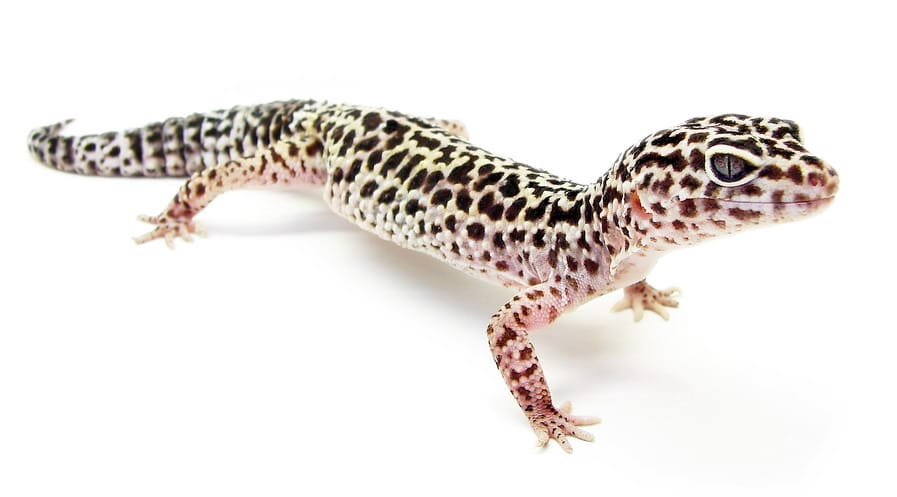
The Leopard Gecko is one of the most recognizable and beginner-friendly reptiles in the world. Native to the rocky deserts and arid grasslands of Afghanistan, Pakistan, and northern India, this small, ground-dwelling lizard is known for its bright yellow body covered with black spots—resembling the pattern of a leopard’s fur, hence the name.
Unlike most geckos, Leopard Geckos have movable eyelids, allowing them to blink and close their eyes while sleeping. Their soft, bumpy skin helps them blend perfectly into sandy environments, while their thick tails serve as fat reserves that sustain them during food shortages. When threatened, the tail can detach as a distraction—an impressive defense mechanism that saves countless lives in the wild.
Leopard Geckos are nocturnal, venturing out at night to hunt small insects such as crickets, beetles, and worms. Their hunting technique relies on stealth and precision, using their keen eyesight and sense of vibration to detect prey in low light. They are also known for their docile temperament, making them one of the most popular pet reptiles around the globe.
In captivity, Leopard Geckos can live for more than 15 years with proper care. They thrive in dry, warm enclosures with hiding spots that mimic their natural environment. Their coloration varies greatly, with breeders creating hundreds of unique morphs — from albino and tangerine to the stunning “super snow” pattern. This diversity keeps them a fan favorite among reptile enthusiasts and wildlife photographers alike.
Identification Tips: Yellow to orange body with dark spots, bumpy skin, movable eyelids, thick detachable tail, and a calm demeanor. Found in arid, rocky habitats.
2. Tokay Gecko (Gekko gecko)
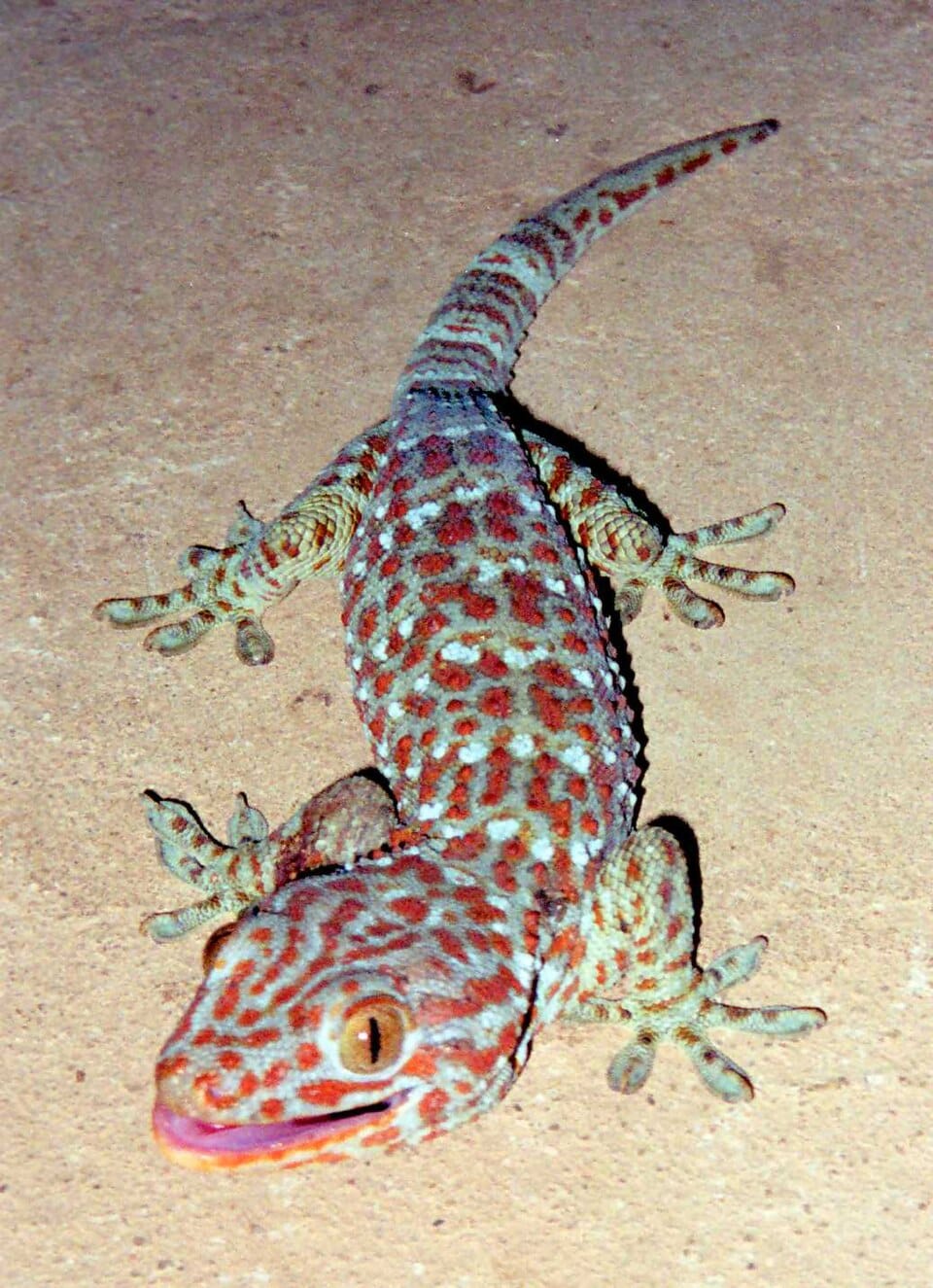
The Tokay Gecko is one of the loudest and most vibrant geckos on Earth. Native to Southeast Asia and parts of the Pacific, it’s instantly recognized by its bright blue-gray body dotted with fiery orange and red spots. Its name “Tokay” comes from the distinct, echoing “to-kay! to-kay!” call made by males during mating season — a sound that can be heard from hundreds of feet away in the jungle night.
This species is known for its bold temperament and powerful jaws. Unlike the gentle Leopard Gecko, the Tokay Gecko is highly territorial and won’t hesitate to defend its space. It’s a skilled climber with specialized toe pads that allow it to cling to vertical surfaces — even glass windows. These toe pads use microscopic hair-like structures called setae, which create molecular-level adhesion strong enough to support the gecko’s full weight upside down.
Tokay Geckos are mostly nocturnal hunters feeding on insects, spiders, and sometimes small vertebrates like frogs or mice. In their natural habitat, they live in humid forests, under tree bark, or inside human dwellings where insects are plentiful. They play a valuable ecological role by controlling pest populations.
Though once captured widely for the pet trade, conservation awareness has helped protect them in many regions. In some Asian cultures, the Tokay Gecko is considered a symbol of luck and longevity. However, they require experienced care in captivity due to their aggressive behavior and need for high humidity.
Identification Tips: Large gecko (up to 14 inches), bright blue-gray skin with red-orange spots, loud two-tone call, strong bite, and adhesive toe pads. Native to Southeast Asia and surrounding islands.
3. Green Iguana (Iguana iguana)
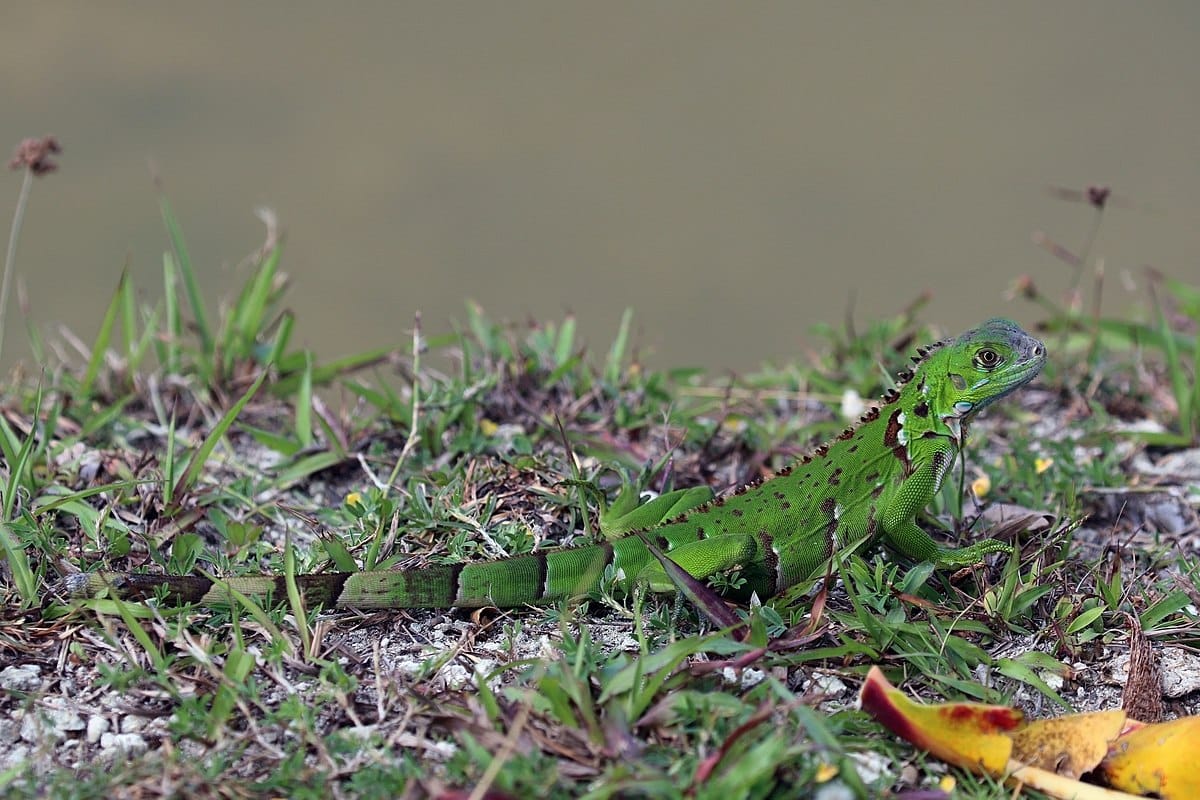
The Green Iguana is one of the most iconic lizards in the world — a living symbol of tropical forests. Native to Central and South America, this arboreal reptile spends most of its life basking in trees along riverbanks, occasionally diving into water to escape predators. Despite its name, not all Green Iguanas are truly green; some individuals display shades of turquoise, orange, or even lavender, depending on their region and mood.
These large lizards can grow over 6 feet long, with more than half their length being tail. They possess a row of spines along the back, a large dewlap under the chin for thermoregulation, and keen eyesight that helps them detect movement from far away. Green Iguanas are herbivorous, feeding mainly on leaves, flowers, and fruits. Their digestive system is uniquely adapted to extract nutrients from tough plant fibers, making them crucial to the forest ecosystem as seed dispersers.
When threatened, a Green Iguana can whip its tail with surprising speed or leap into a river to swim away — they’re excellent swimmers, capable of staying submerged for over 30 minutes. Males become especially territorial during the breeding season, displaying bright colors and head-bobbing signals to attract females.
As pets, Green Iguanas are both captivating and challenging. They require spacious enclosures, UVB lighting, and a strictly vegetarian diet. Many owners underestimate their eventual size and strength, leading to improper care — a major reason why education about these reptiles is essential for their welfare.
Identification Tips: Large arboreal lizard (up to 6 feet), long tail, crest of spines, large dewlap, predominantly green with variations, herbivorous, native to tropical Americas.
4. Bearded Dragon (Pogona vitticeps)
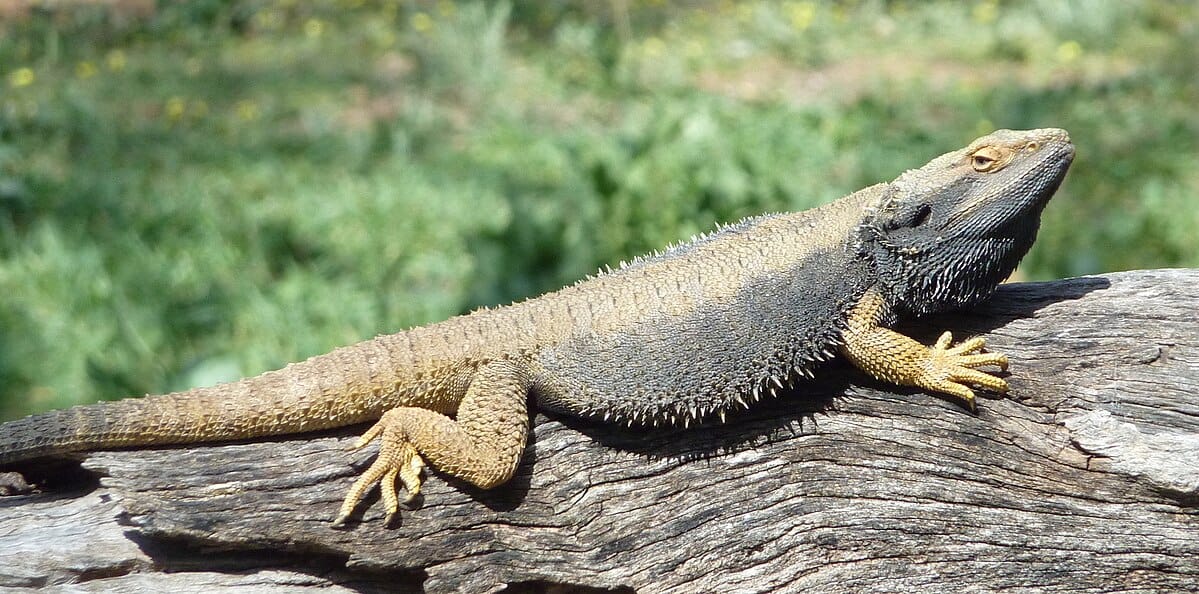
The Bearded Dragon, often called “beardie,” is one of the most beloved pet reptiles and a charismatic representative of Australian wildlife. Native to the arid deserts and woodlands of central Australia, this medium-sized lizard is named for its expandable “beard” — a spiny throat pouch that darkens and flares when the dragon feels threatened or excited.
Bearded Dragons are diurnal (active during the day) and spend much of their time basking on rocks under the hot sun. Their tan-to-orange coloration provides excellent camouflage against the desert sand. They are omnivorous, feeding on a variety of insects, leafy greens, and fruits. In captivity, their calm nature and expressive behaviors — like head-bobbing, arm-waving, and basking — have made them social media stars among reptile keepers.
One of their most intriguing behaviors is “thermoregulation.” Bearded Dragons adjust their body temperature by changing posture or moving between sun and shade. They even flatten their bodies to increase heat absorption. Despite their spiky look, they’re gentle and curious, easily bonding with handlers through regular interaction.
During cold seasons, wild Bearded Dragons enter a state called brumation — similar to hibernation — conserving energy until warmer weather returns. This survival strategy helps them endure Australia’s harsh climate.
Identification Tips: Stocky body, triangular head, spiny beard and sides, tan to orange coloration, gentle behavior, native to Australia’s arid interior.
5. Blue-Tongued Skink (Tiliqua scincoides)
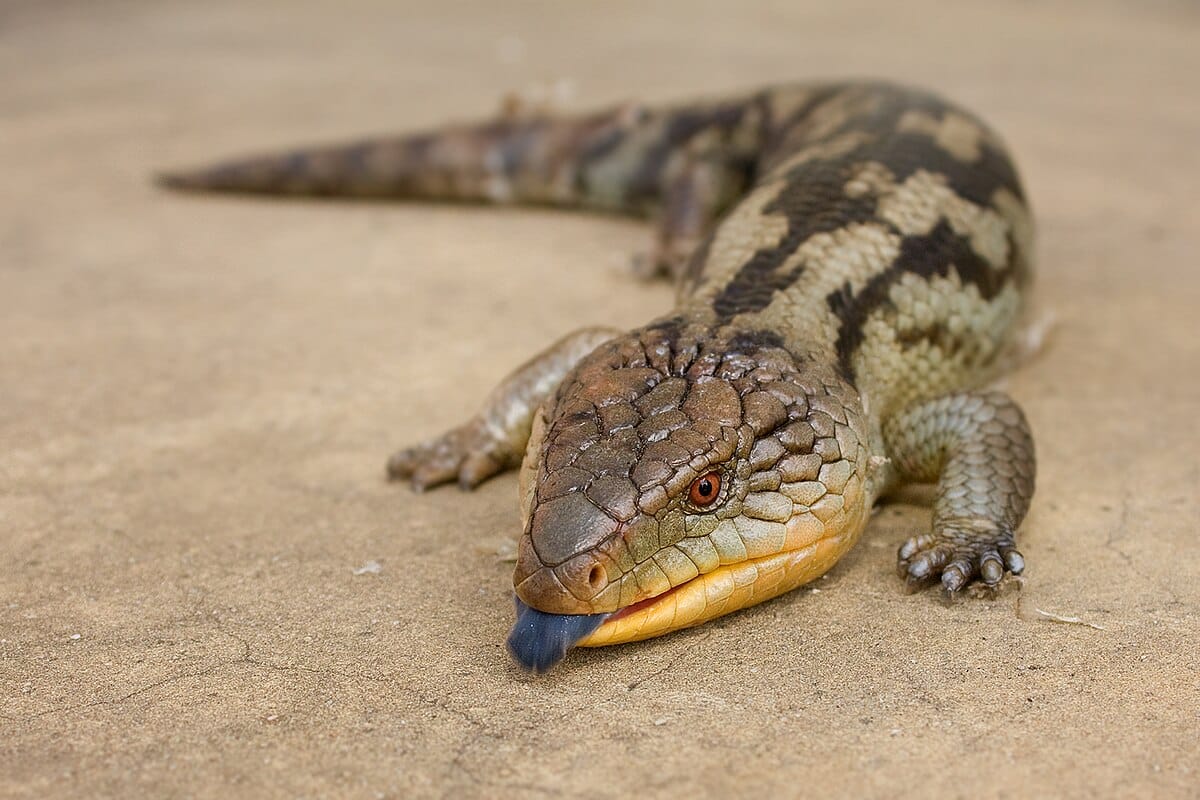
The Blue-Tongued Skink is an extraordinary reptile with a secret weapon — a vivid blue tongue that it flashes to startle predators. Found in Australia, New Guinea, and parts of Indonesia, this ground-dwelling lizard prefers dry forests, grasslands, and suburban gardens. It’s one of the largest members of the skink family, growing up to 24 inches in length.
Blue-Tongued Skinks are known for their smooth, shiny scales and thick, muscular bodies. Their coloration typically features alternating brown and cream bands that provide camouflage against leaf litter. When threatened, they open their mouths wide and display the bright blue tongue, a warning signal that mimics toxicity — even though the skink is harmless to humans.
Unlike many lizards, Blue-Tongued Skinks give birth to live young instead of laying eggs. This adaptation allows them to thrive in variable environments where eggs could easily desiccate. They are omnivores, eating a mix of insects, snails, fruits, and flowers. In urban areas, they even help control pest populations by feeding on slugs and beetles.
Docile and slow-moving, these lizards are often seen basking on warm pavement or hiding under garden debris. As pets, they’re prized for their calm temperament, intelligence, and interactive nature — they recognize their keepers and even learn simple routines.
Identification Tips: Large, smooth-bodied skink with short legs, alternating brown bands, and a distinctive blue tongue used for defense. Common in Australia and nearby islands.
6. Crested Gecko (Correlophus ciliatus)
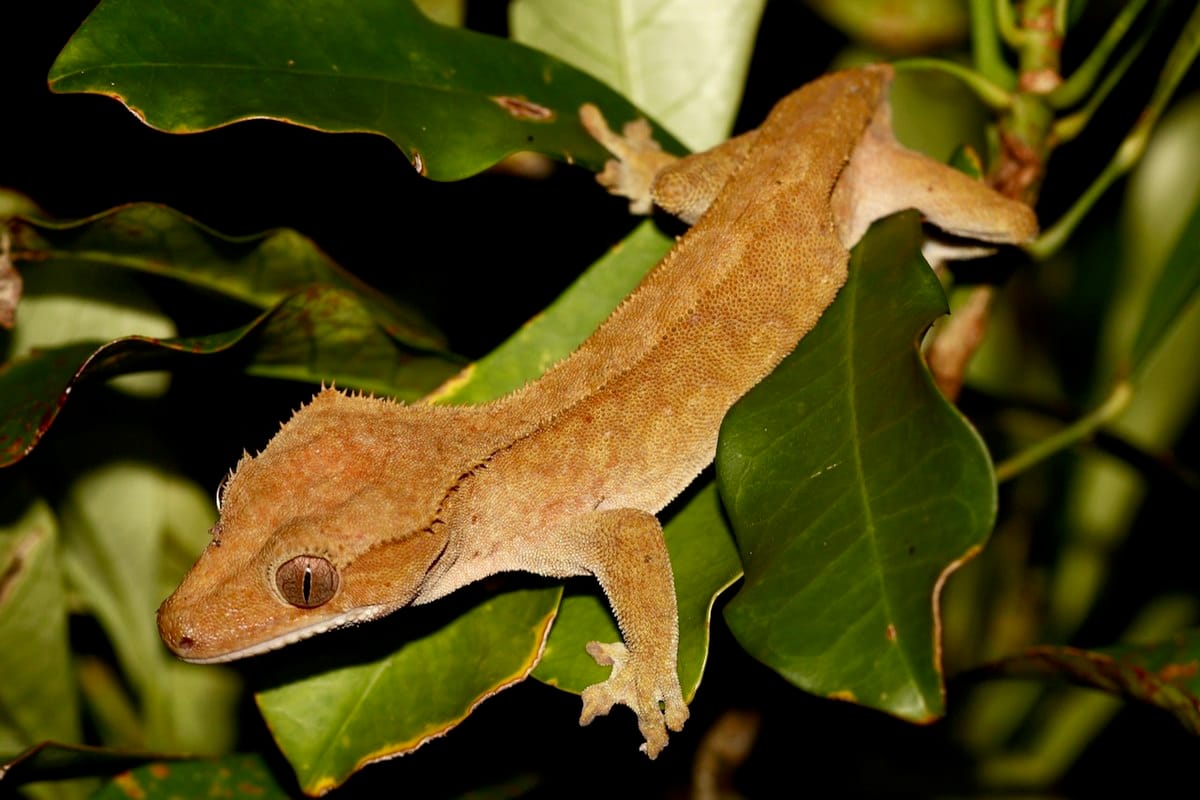
The Crested Gecko is a small, enchanting reptile that has captured the hearts of reptile keepers and wildlife enthusiasts alike. Native to the rainforests of New Caledonia, this species was once believed to be extinct until its rediscovery in 1994. Today, it stands as one of the most popular pet lizards thanks to its gentle nature and striking appearance.
The name “Crested Gecko” comes from the soft, spiky ridges that run from its eyes down the sides of its body, giving the impression of little eyelashes. Their colors range from cream and orange to red, brown, and even dark charcoal. They are nocturnal and arboreal, preferring to climb trees and hide among leaves during the day. At night, they come alive, hunting insects and feeding on ripe fruit and nectar.
Unlike many lizards, Crested Geckos lack eyelids. Instead, they use their tongues to lick their eyes clean and moist. Their toes and prehensile tail are equipped with specialized pads that allow them to stick to smooth surfaces with ease. This makes them skilled climbers and jumpers—an adaptation essential for surviving in dense tropical canopies.
In captivity, Crested Geckos thrive in vertical terrariums with high humidity and plenty of climbing branches. Their docile personality and ease of care make them excellent choices for beginners. Interestingly, these geckos can also drop their tails as a defense mechanism, but unlike Leopard Geckos, their tails don’t grow back—a unique trait that sets them apart.
Identification Tips: Small to medium size, soft crests above the eyes, smooth skin, no eyelids, sticky toe pads, prehensile tail, nocturnal and arboreal. Native to New Caledonia.
7. Chameleon (Chamaeleonidae)
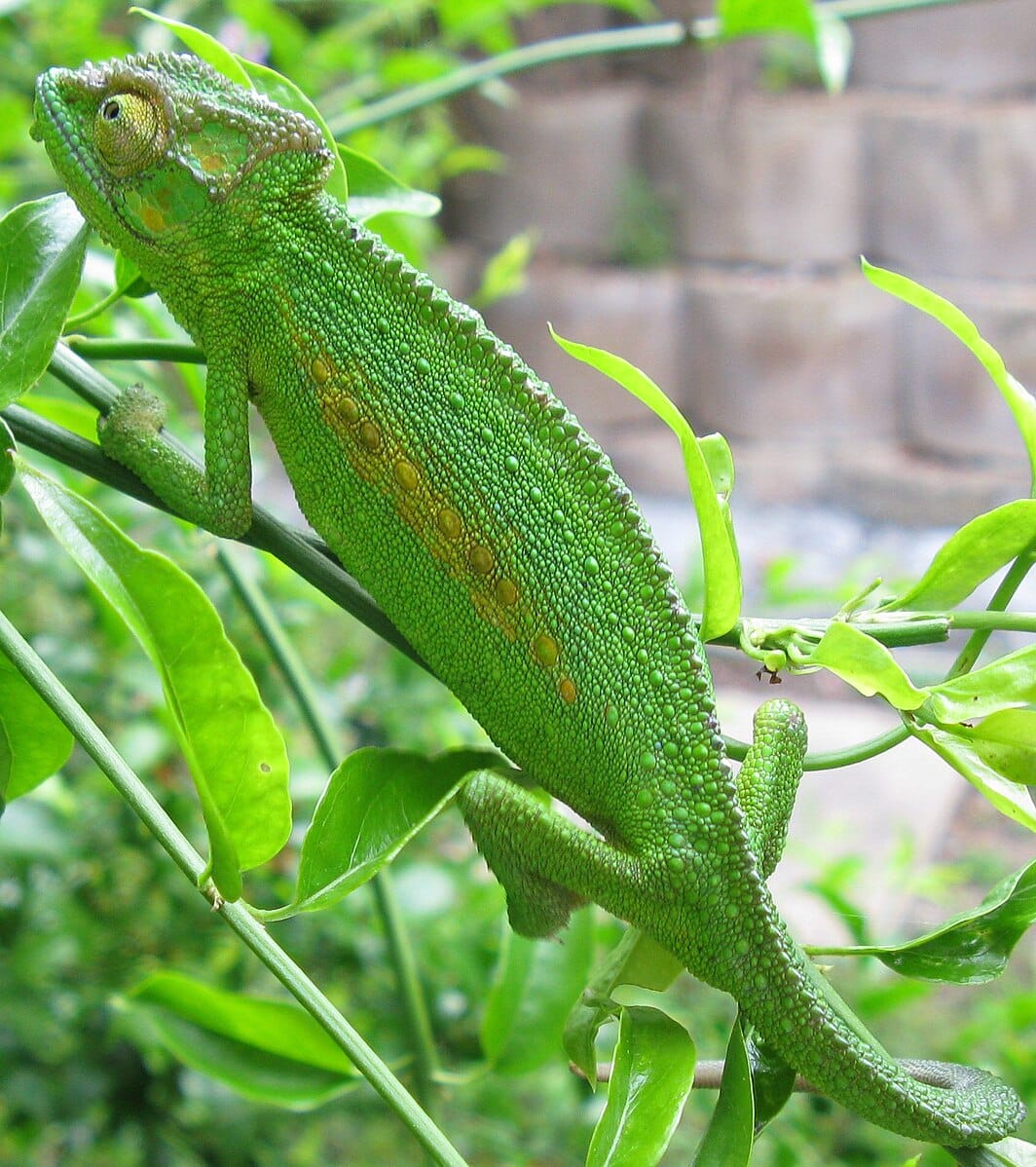
Chameleons are legendary for their color-changing abilities, turret eyes, and graceful, slow movements. Found primarily in Madagascar and Africa, with some species in Asia and southern Europe, chameleons represent one of the most specialized lizard families on Earth. Their appearance alone makes them one of the most recognizable reptiles in the world.
These reptiles have independently rotating eyes, allowing them to scan nearly 360 degrees around them without moving their heads. When they spot prey—usually insects like crickets and flies—they unleash their long, sticky tongues with lightning speed, often catching food in less than a second. Their famous color-changing ability isn’t just for camouflage; it’s also a way to regulate temperature and communicate mood or dominance to other chameleons.
Chameleons prefer humid or semi-humid environments with abundant foliage. They are arboreal and move cautiously through trees using their zygodactyl feet (two toes facing forward, two backward) and prehensile tails for balance. They’re solitary creatures that rely on their camouflage and slow movements to avoid predators.
In captivity, they require carefully controlled environments with strong UVB lighting, misting systems, and live plants to mimic their natural habitat. Because of their sensitivity to stress, chameleons are best suited for experienced reptile keepers who understand their unique needs.
Identification Tips: Bulging independently rotating eyes, zygodactyl feet, prehensile tail, ability to change color, slender body, arboreal habitat. Mostly found in Africa and Madagascar.
8. Anole Lizard (Anolis carolinensis)
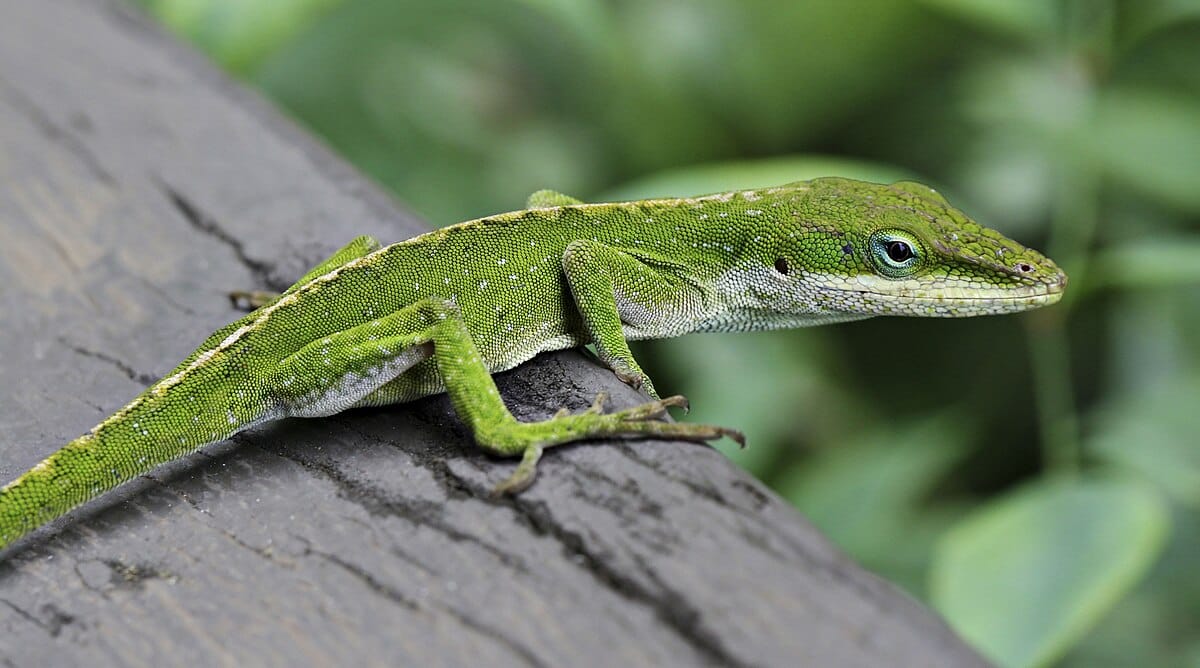
The Anole Lizard—especially the Green Anole—is a classic representative of North American backyard wildlife. Native to the southeastern United States, these small, agile lizards are known for their ability to change color from bright green to brown depending on temperature, stress, or background environment. Although not true chameleons, their color-shifting abilities give them a similar charm.
Green Anoles are diurnal and love to bask in sunny spots. Males display a bright pink throat fan, or dewlap, to attract females and defend territory. They are excellent climbers, thanks to their adhesive toe pads that allow them to cling to walls, leaves, and even glass. Their diet consists mainly of small insects, making them helpful in controlling pest populations in gardens and urban settings.
They prefer warm, humid environments with plenty of vegetation. In the wild, they can be seen sunning themselves on fences or branches, quickly darting away when approached. Their behavior is highly responsive to light and temperature—on cooler days, they become sluggish and darker in color to absorb heat.
In captivity, Anoles are active, curious, and relatively easy to care for. They thrive in terrariums with live plants, branches, and proper UVB lighting. While they’re not usually handled as much as Bearded Dragons, observing their quick movements and display behaviors is fascinating for reptile enthusiasts.
Identification Tips: Small, slender body; green to brown color; pink throat fan in males; adhesive toe pads; insectivore; common in the southeastern U.S.
9. Marine Iguana (Amblyrhynchus cristatus)
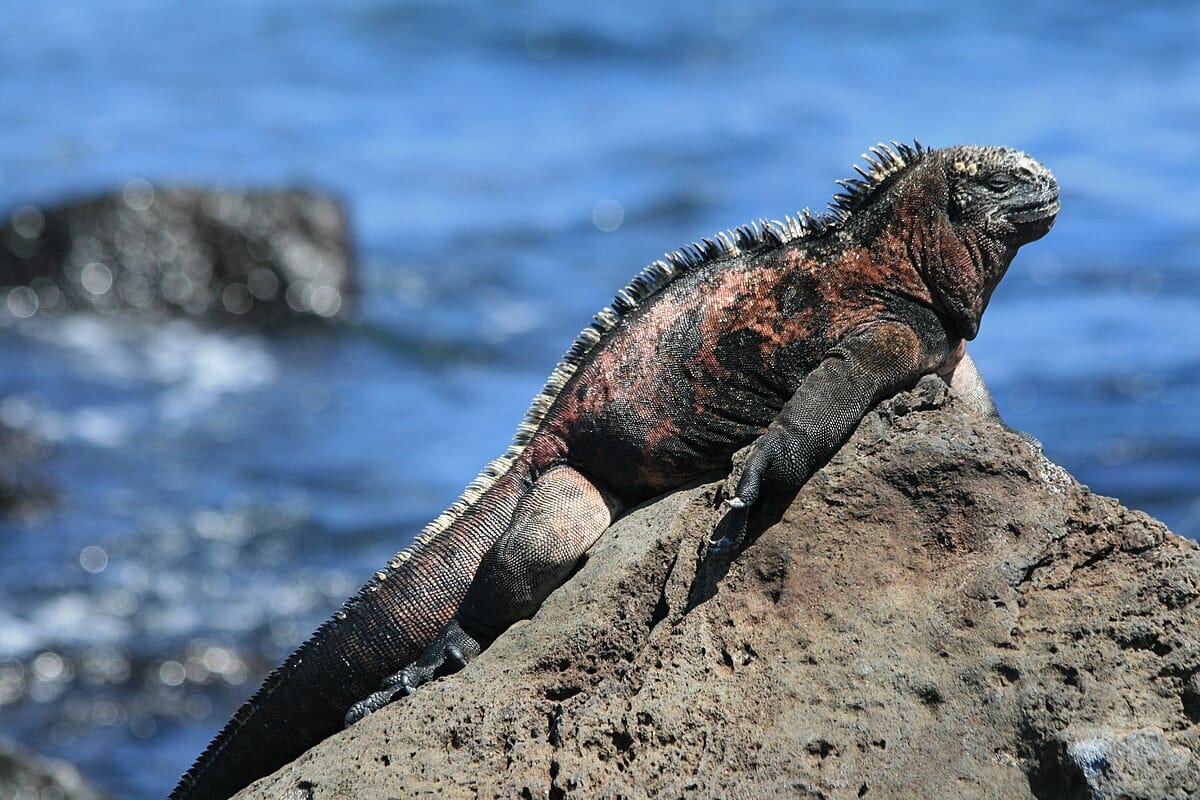
The Marine Iguana is a truly unique reptile — the only lizard in the world adapted to life in the ocean. Endemic to the Galápagos Islands, this remarkable species has evolved to feed almost exclusively on algae found on rocks beneath the waves. Its existence is a living testament to evolution and adaptation.
Marine Iguanas have strong limbs, flattened tails for swimming, and dark coloration that helps them absorb heat quickly after returning from cold ocean waters. They can hold their breath for up to 30 minutes while diving, and their sharp claws allow them to grip slippery rocks. After feeding, they bask in the sun in large groups, raising their body temperature back to normal.
One of their most distinctive traits is their ability to expel excess salt from their bodies through specialized nasal glands. This results in a curious behavior—“sneezing” out salty water—often seen when they’re resting on rocks.
They are primarily herbivores, feeding on red and green algae, and play a crucial role in the Galápagos marine ecosystem. However, climate change and human impact pose significant threats to their survival, making them a conservation priority.
Identification Tips: Large, dark-colored iguana with flattened tail, strong limbs, salt-sneezing behavior, excellent swimmer, endemic to the Galápagos Islands.
10. Komodo Dragon (Varanus komodoensis)
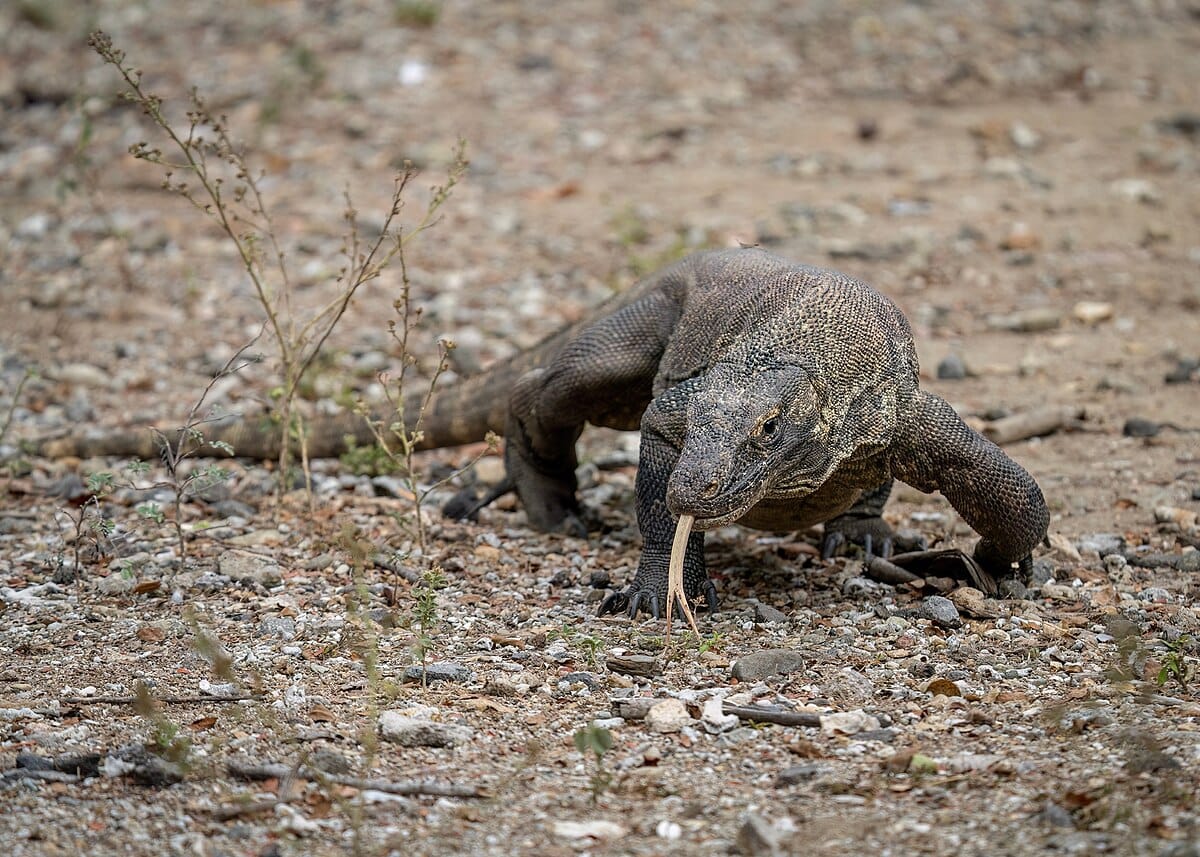
The Komodo Dragon is the largest living lizard on Earth and one of the most powerful predators in the reptile world. Native to a few Indonesian islands, including Komodo, Rinca, and Flores, these giants can reach lengths of over 10 feet and weigh more than 150 pounds. Their size, strength, and hunting prowess have earned them a near-mythical reputation.
Komodo Dragons are ambush predators, capable of taking down large prey such as deer, wild boar, and even water buffalo. They rely on patience, stealth, and explosive bursts of speed to capture their prey. Once they bite, their sharp serrated teeth and venomous saliva (containing anticoagulants and toxins) make escape nearly impossible for their victim.
These lizards inhabit savannas, grasslands, and dry tropical forests. They are excellent swimmers and have a keen sense of smell, using their forked tongues to detect scents up to several miles away. Despite their fearsome image, they play an important role as apex predators in maintaining ecosystem balance.
Komodo Dragons are protected under Indonesian law and listed as vulnerable due to habitat loss and human encroachment. Conservation programs have been crucial to preserving their remaining wild populations.
Identification Tips: Extremely large lizard (up to 10 feet), muscular body, long forked tongue, serrated teeth, venomous bite, native to Indonesian islands.
11. Gila Monster (Heloderma suspectum)
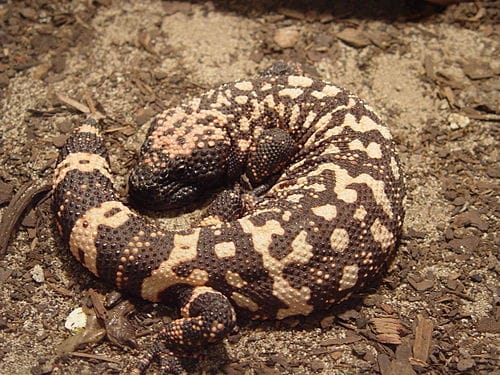
The Gila Monster is one of only two venomous lizard species in the world, making it a fascinating yet misunderstood reptile. Native to the deserts of the southwestern United States and northern Mexico, it thrives in dry, rocky habitats where temperatures fluctuate drastically between day and night. Despite its fearsome reputation, the Gila Monster is actually a slow-moving and secretive creature, spending nearly 90% of its life underground.
Recognized by its striking black-and-orange bead-like scales, the Gila Monster has a thick body, short limbs, and a blunt tail used for fat storage. Its venom is delivered through grooves in its lower teeth rather than through fangs. The toxin, while painful to humans, is rarely fatal. Interestingly, compounds derived from Gila Monster venom have been used in medical research to develop treatments for diabetes—an incredible example of nature inspiring science.
These lizards are most active during the spring and early summer, emerging from burrows to feed on bird eggs, small mammals, and other reptiles. They have a slow metabolism, allowing them to survive long periods without food. Their method of hunting relies on strong jaws and persistence rather than speed or stealth.
Though sometimes feared, Gila Monsters play a vital role in their ecosystem as scavengers and predators. They are protected by law in the United States, and harming one can result in heavy fines. Observing one in the wild is a rare and memorable experience for any wildlife enthusiast.
Identification Tips: Heavy-bodied lizard with bead-like scales, black and orange patterning, venomous bite, slow-moving, native to the deserts of the southwestern U.S. and Mexico.
12. Nile Monitor (Varanus niloticus)
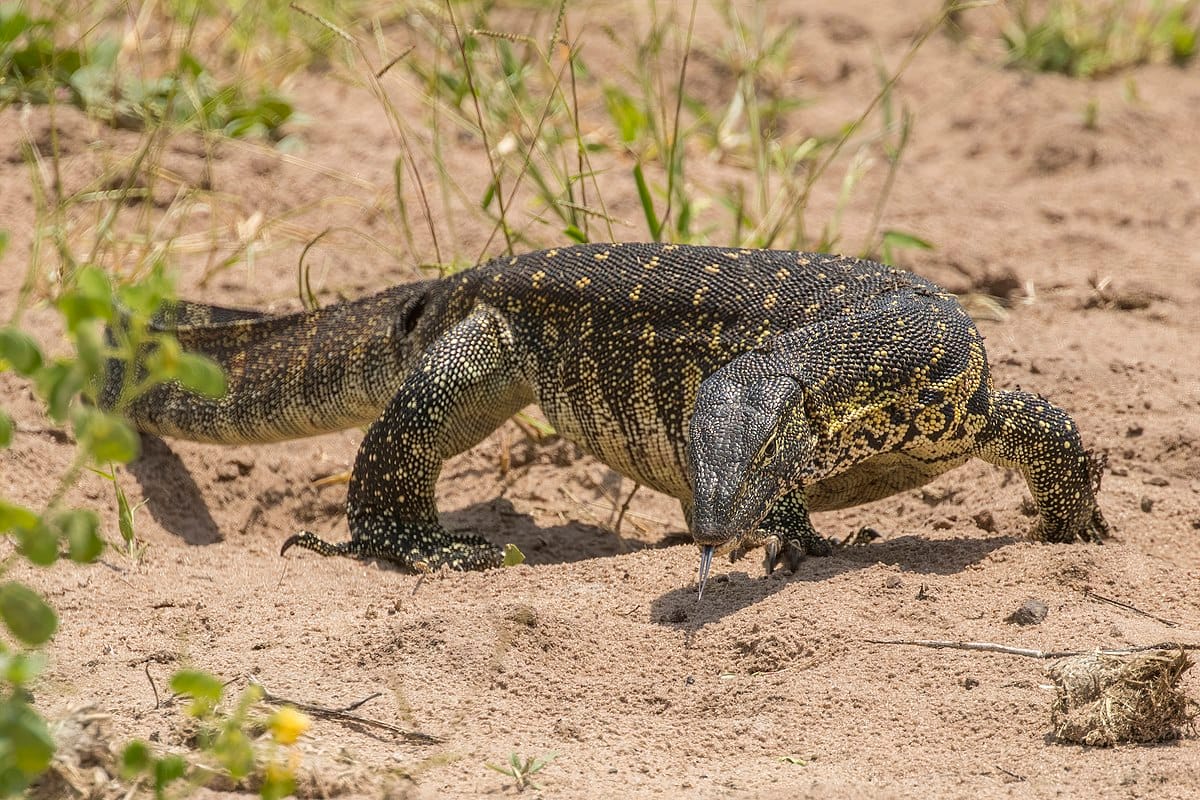
The Nile Monitor is Africa’s most widespread and powerful monitor lizard, known for its intelligence, agility, and adaptability. Found across sub-Saharan Africa, this species thrives in diverse habitats—from riverbanks and wetlands to savannas and urban areas. With their muscular build and keen senses, Nile Monitors are formidable hunters and survivors.
These lizards can grow over 7 feet in length, featuring sleek, dark bodies covered with yellow or cream spots and bands. Their long tails are flattened laterally, helping them swim swiftly in water, while sharp claws and strong limbs make them excellent climbers. Their forked tongues, like those of snakes, allow them to detect scent particles in the air, giving them an acute sense of smell used for tracking prey.
Nile Monitors are opportunistic feeders with a broad diet—fish, frogs, birds, eggs, rodents, and carrion all make the menu. They are known to raid crocodile nests for eggs, an act that demonstrates both courage and cleverness. Their intelligence has impressed researchers, as they’ve been observed solving problems and showing learning behaviors not often seen in reptiles.
In some regions, Nile Monitors have become invasive, such as in parts of Florida, where released pets have established wild populations. Despite their intimidating size and defensive nature, they’re not aggressive unless provoked. Their presence is an important part of African river ecosystems, helping control pest and scavenger populations.
Identification Tips: Large semi-aquatic lizard with dark body and yellow spots, forked tongue, long muscular tail, powerful swimmer and climber, native to Africa.
13. Armadillo Girdled Lizard (Ouroborus cataphractus)
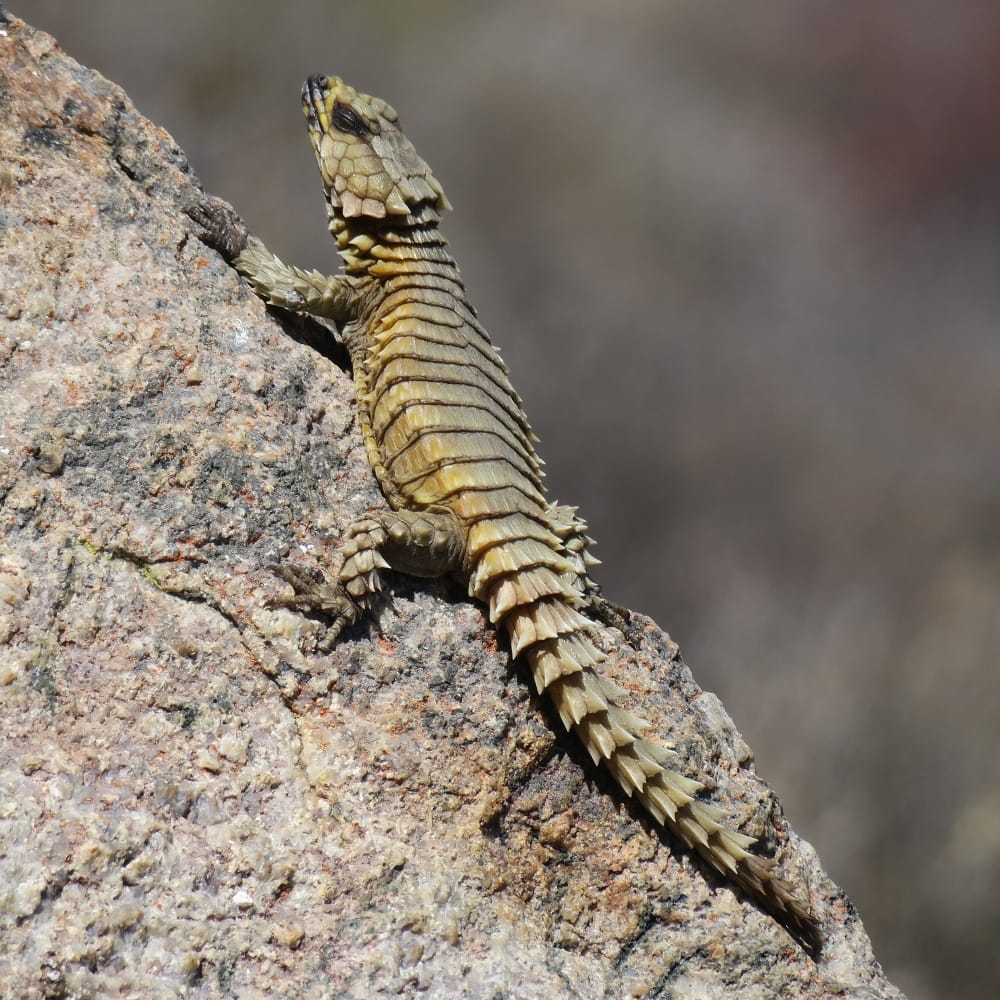
The Armadillo Girdled Lizard is one of the most unusual-looking reptiles in the world, named for its habit of curling into a ball like an armadillo when threatened. Endemic to South Africa’s rocky deserts, this species is instantly recognizable by its thick, armor-like scales and spiny tail, which it bites and holds to protect its soft underbelly—a defense strategy that gives it a mythical, dragon-like appearance.
This lizard’s rough, golden-brown body blends perfectly with the rocky outcrops it inhabits. It lives in social colonies, which is rare among reptiles, and often basks together in the sun during the day. Its diet consists mainly of small insects, particularly termites, which are abundant in its arid habitat.
Unlike many reptiles, the Armadillo Girdled Lizard gives birth to live young instead of laying eggs. This adaptation helps ensure survival in harsh, dry conditions where eggs could easily dehydrate. Because of its fascinating looks and social nature, it became popular in the pet trade, but overcollection led to conservation concerns. Fortunately, strict protections now help preserve wild populations.
Its common name, “Ouroborus,” also refers to the ancient symbol of a serpent eating its own tail—a fitting nod to its defensive behavior. Watching this tiny “miniature dragon” curl into a perfect circle is a spectacle for any wildlife observer.
Identification Tips: Small, spiny, golden-brown lizard with heavily armored scales; curls into a ball when threatened; native to arid rocky regions of South Africa.
14. Argentine Black and White Tegu (Salvator merianae)
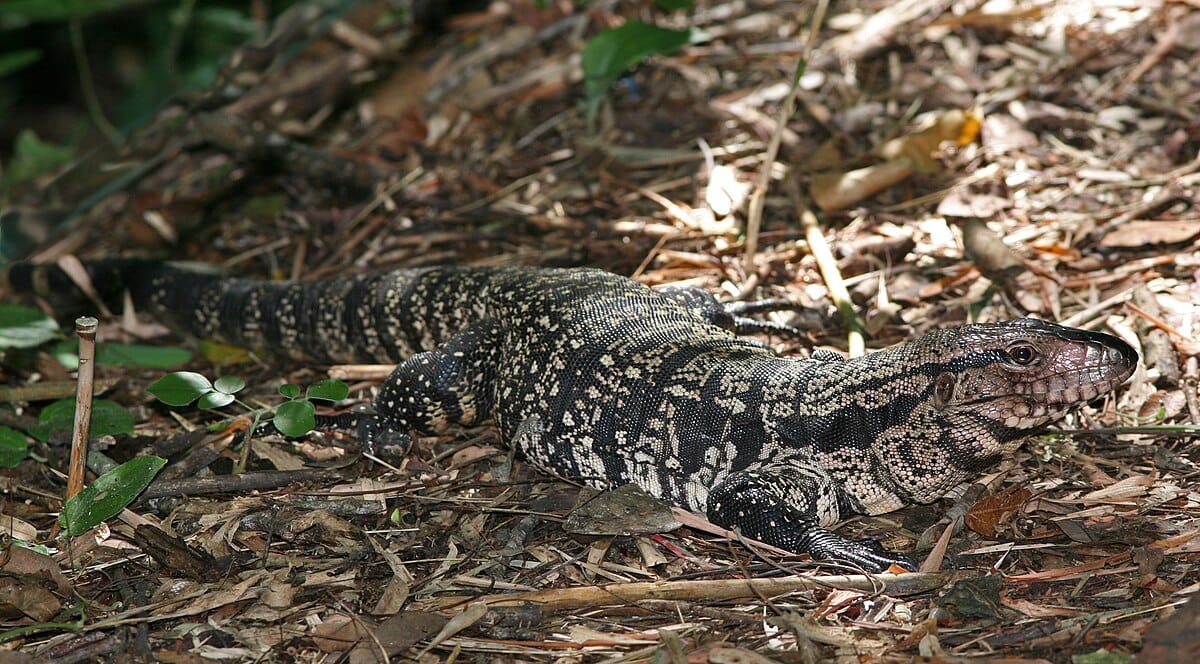
The Argentine Black and White Tegu is a large, intelligent lizard native to South America, particularly Argentina, Brazil, and Paraguay. It’s admired for its distinctive pattern, high intelligence, and even-tempered personality—traits that have made it both a fascinating wild reptile and an increasingly popular pet species.
Adult Tegus can reach lengths of over 4 feet, covered in glossy black-and-white bands that provide effective camouflage in the forests and grasslands where they roam. They are omnivores with a diverse diet that includes fruits, eggs, small mammals, and insects. Their strong jaws and keen sense of smell make them versatile hunters, while their curiosity and adaptability enable them to thrive in various habitats.
One of the most remarkable features of the Argentine Tegu is its ability to regulate its body temperature independently of the environment, especially during the breeding season. This makes it one of the few partially warm-blooded reptiles known to science. In the wild, they hibernate during cold months, retreating into burrows to conserve energy.
Tegus are also known for their intelligence; they can recognize their owners, learn routines, and display curiosity much like mammals. However, in places like Florida, escaped or released Tegus have become invasive, posing ecological challenges by preying on native wildlife. Despite this, their natural role in South America’s ecosystems remains crucial as seed dispersers and scavengers.
Identification Tips: Large black-and-white lizard with robust build, forked tongue, omnivorous diet, intelligent behavior, native to South America.
15. Desert Horned Lizard (Phrynosoma platyrhinos)
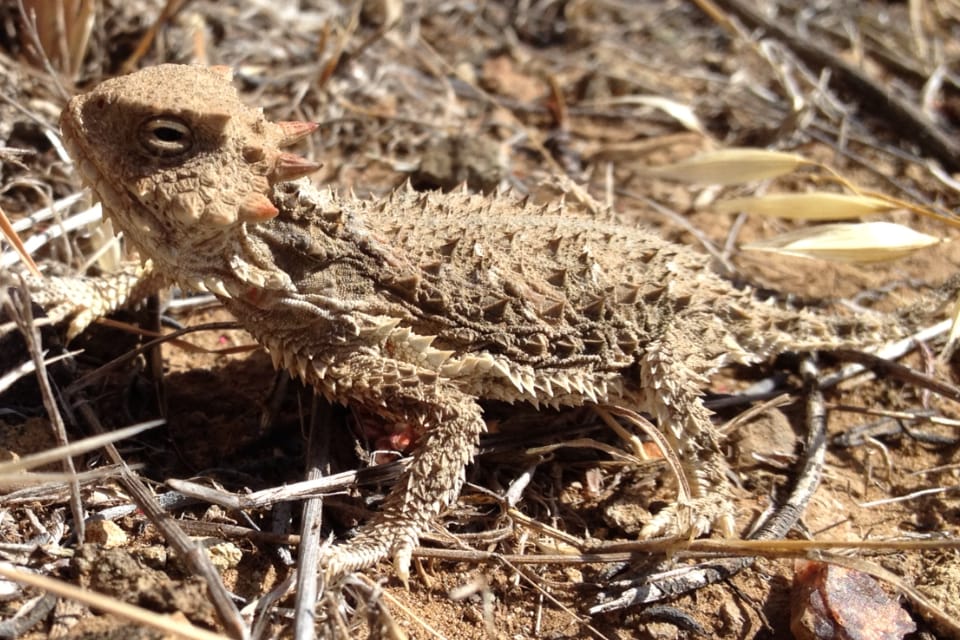
The Desert Horned Lizard, affectionately known as the “horned toad” due to its flattened, toad-like body, is one of North America’s most remarkable reptiles. Found across the deserts of the southwestern United States and northern Mexico, this species is perfectly adapted to life in scorching, sandy environments.
Its tan-to-reddish coloration blends seamlessly with the desert soil, providing superb camouflage. The lizard’s body is covered in spines, with two prominent horns projecting from the back of its head. When threatened, it can puff up its body to appear larger or, in extreme situations, squirt blood from its eyes as a defense mechanism—a unique adaptation that startles predators like coyotes and birds of prey.
Desert Horned Lizards primarily feed on ants, especially harvester ants, and their diet helps regulate insect populations in arid regions. They rely on their camouflage for protection rather than speed, often freezing completely when danger approaches. During the hottest parts of the day, they burrow into sand or hide beneath rocks to avoid overheating.
Despite their fierce appearance, these lizards are gentle and non-aggressive. Observing one in the wild requires patience and a sharp eye, as their natural camouflage makes them nearly invisible against the desert backdrop. They symbolize resilience and adaptability, embodying the spirit of desert wildlife.
Identification Tips: Flattened body, tan-to-reddish coloration, head horns, spiny scales, squirts blood from eyes when threatened, native to North American deserts.
16. Green Basilisk Lizard (Basiliscus plumifrons)
The Green Basilisk Lizard, also known as the “Jesus Christ Lizard,” is famous for its astonishing ability to run on water. Native to the tropical rainforests of Central America, this vibrant green lizard is a symbol of agility, balance, and natural wonder. Its ability to dash across rivers for several meters without sinking has made it one of the most photographed reptiles in the world.
Green Basilisks are medium-sized lizards with slender bodies, long tails, and a striking green coloration often decorated with turquoise spots. Males have a tall crest along their back and head that gives them a regal appearance. They spend much of their time perched near rivers and streams, ready to leap into action if danger approaches.
The secret to their water-running ability lies in their specialized hind feet, which have long toes with fringed skin flaps. When the basilisk runs rapidly, these flaps create tiny air pockets that keep it from breaking the water’s surface—allowing it to literally walk on water. They use this escape tactic to flee from predators like birds, snakes, and larger mammals.
Green Basilisks are omnivorous, feeding on insects, fruits, and small vertebrates. They are diurnal, basking in the sunlight during the day and retreating to vegetation at night. Their bright coloration not only camouflages them in lush foliage but also plays a role in territorial and mating displays.
Few lizards can match the charisma and sheer spectacle of the Green Basilisk. Watching one sprint across a stream feels almost magical—a vivid reminder of nature’s ingenuity.
Identification Tips: Bright green body with turquoise spots, tall dorsal crest in males, long toes for running on water, native to Central America’s rainforests.
17. Frilled-Neck Lizard (Chlamydosaurus kingii)
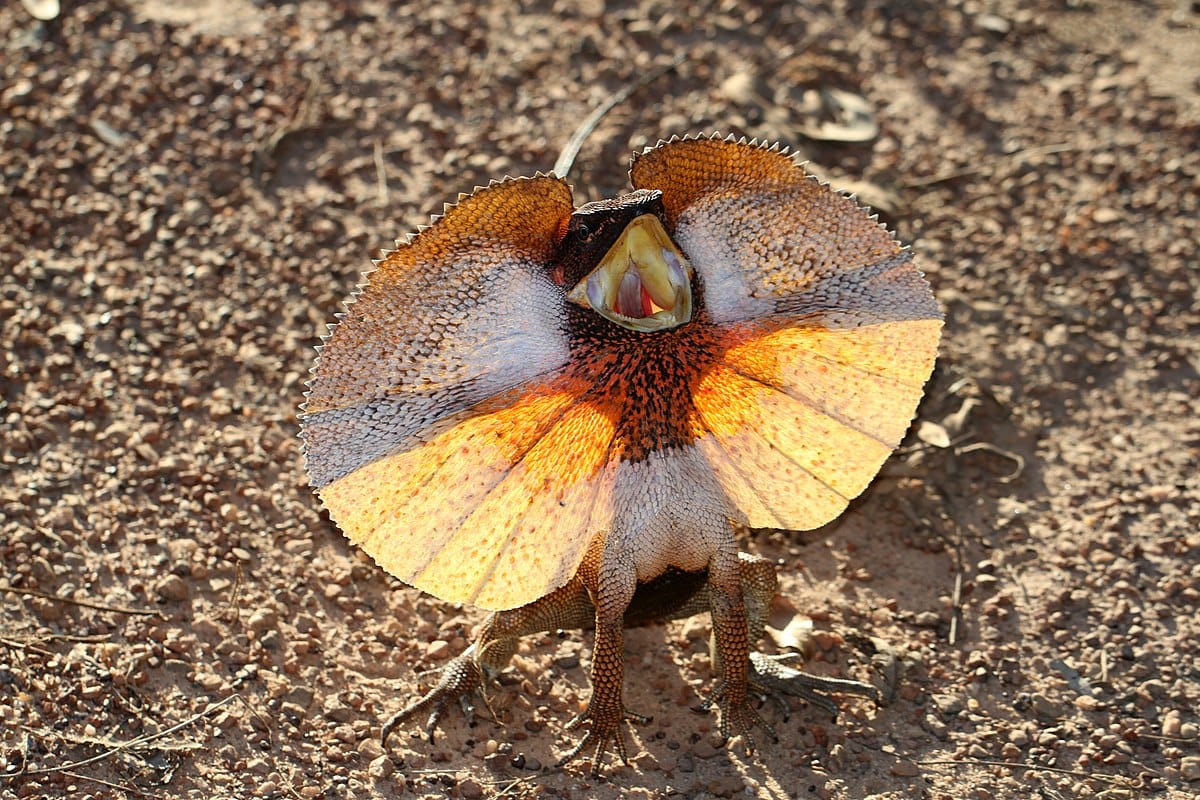
The Frilled-Neck Lizard is one of the most theatrical reptiles in the world, instantly recognizable by the large, circular frill around its neck that it can fan out when threatened. Native to northern Australia and New Guinea, this spectacular defense mechanism has earned the species fame as both a natural marvel and a pop culture icon.
Normally, the frill lies folded against the lizard’s body. But when startled, the Frilled Lizard opens its mouth wide, flares the frill, and hisses loudly—making itself look much larger and more menacing. This bluff is often enough to deter predators such as snakes and birds. If the display fails, the lizard will bolt away on its hind legs, running upright in a comical but speedy escape.
Frilled-Neck Lizards are arboreal, spending most of their lives in trees where they hunt insects, spiders, and small vertebrates. They are masters of camouflage, their mottled brown or gray scales blending seamlessly with tree bark. During the wet season, they become more active, feeding and mating before retreating to higher branches during the dry season.
In terms of behavior, these lizards are surprisingly intelligent and cautious. They rely on visual communication, using body posture and frill displays during social interactions. Though dramatic in appearance, the Frilled Lizard is gentle by nature, posing no threat to humans.
Identification Tips: Brown or gray arboreal lizard with large neck frill; displays frill when threatened; runs bipedally; native to northern Australia and New Guinea.
18. Flying Dragon (Draco volans)
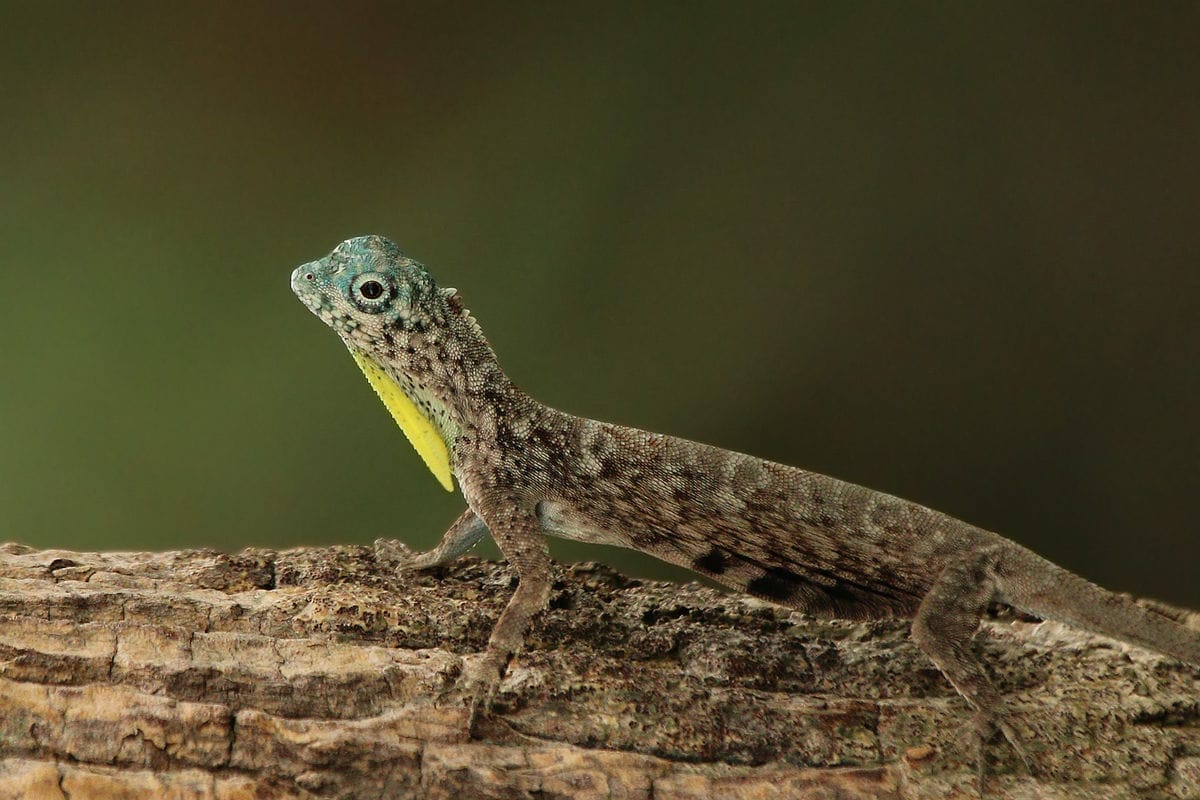
The Flying Dragon, or Draco Lizard, is one of the most fascinating reptiles in Southeast Asia — famous for its ability to glide between trees using wing-like flaps of skin. Found in countries like the Philippines, Malaysia, and Indonesia, this little dragon truly lives up to its mythical name.
Appearance and Identification
The Flying Dragon is a small lizard, typically around 8–10 inches long, including its tail. What makes it extraordinary are the elongated ribs that support flaps of skin called patagia, which spread out to form “wings.” These membranes are often brightly colored with patterns of orange, yellow, and blue, depending on the species. Males also have a striking dewlap — a colorful throat fan used to communicate and attract mates.
Behavior and Adaptations
Despite the nickname, Flying Dragons don’t actually fly; instead, they glide gracefully from tree to tree, covering distances of up to 30 feet. They use this ability to escape predators and move efficiently through the forest canopy without descending to the ground. Their diet mainly consists of ants and small insects, which they catch while clinging to tree trunks.
Habitat and Distribution
Draco Lizards inhabit tropical rainforests across Southeast Asia, thriving in regions with tall trees and dense canopies. They are rarely seen on the ground, spending almost their entire lives in the treetops.
Fun Fact
When gliding, the Flying Dragon can steer midair by adjusting the angle of its ribs and tail — a natural aerodynamics feat that has inspired research in micro-air-vehicle design.
19. Uromastyx Lizard (Uromastyx aegyptia)
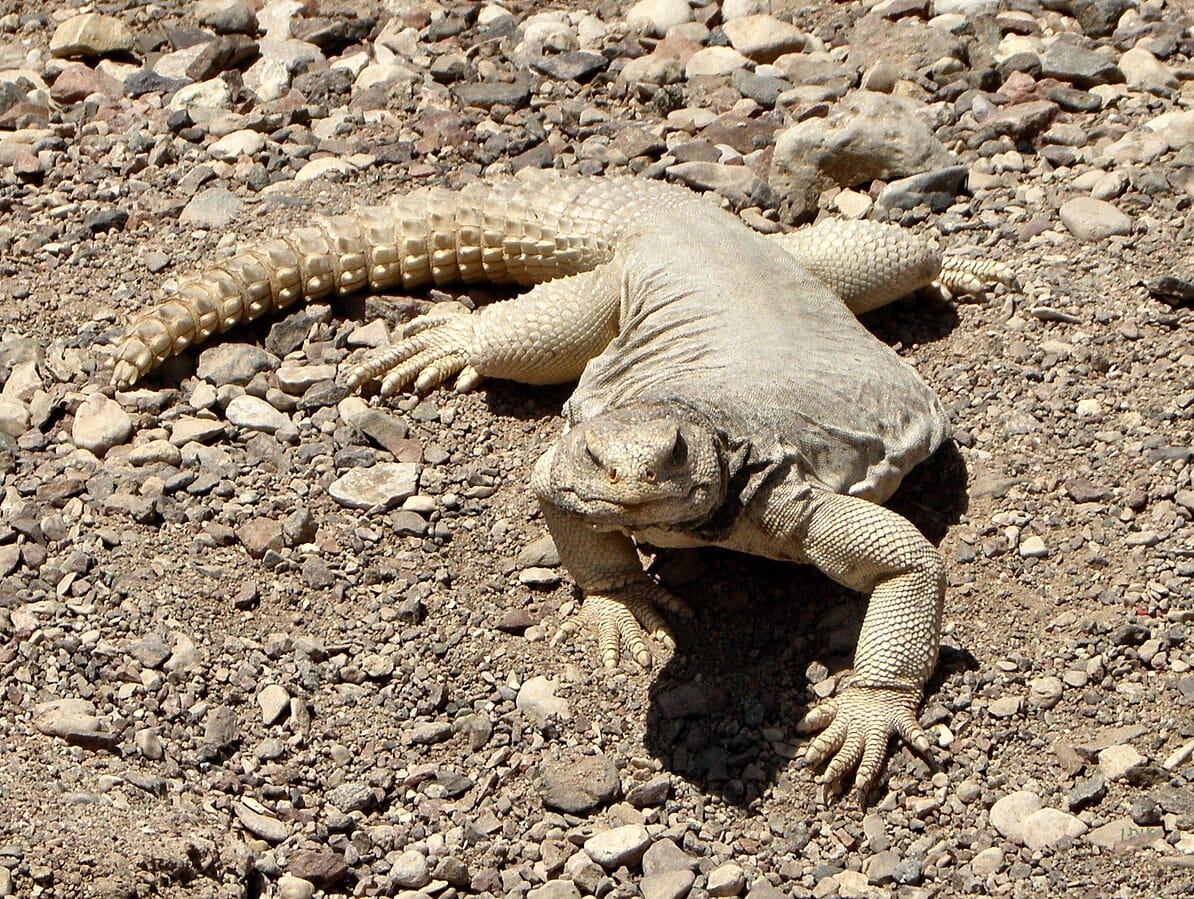
The Uromastyx, commonly called the Spiny-Tailed Lizard, is a tough, desert-dwelling reptile perfectly adapted to the scorching environments of North Africa, the Middle East, and parts of Asia. These lizards are instantly recognizable by their thick, spiked tails, which they use both as a defense weapon and to store fat for long periods without food or water.
Uromastyx lizards come in a variety of species and colors, ranging from gray and beige to brilliant yellow, orange, and red. Their skin is covered in small scales that reflect sunlight, helping them stay cool under the blazing desert sun. They spend most of their time basking on hot rocks, retreating into burrows during extreme heat or cold to maintain a stable body temperature.
Unlike many lizards, Uromastyx are primarily herbivorous. Their diet consists of leaves, flowers, and seeds, though they occasionally consume insects. Their digestive systems are uniquely efficient at extracting water from plant material, allowing them to survive in regions where rainfall is rare. This adaptation makes them one of the most heat-tolerant reptiles on Earth.
When threatened, the Uromastyx lashes its spiny tail with surprising force, deterring predators like snakes and foxes. Despite their fierce appearance, these lizards are typically docile and slow-moving. In captivity, they’re known for their calm temperament and impressive lifespan, often exceeding 20 years.
Uromastyx lizards symbolize desert endurance—resilient, resourceful, and unbothered by the extremes of their environment. Watching one bask contentedly under the sun is a perfect snapshot of life in the harshest landscapes on Earth.
Identification Tips: Stocky lizard with spiny tail, earth-toned or brightly colored scales, herbivorous diet, native to desert regions of Africa and the Middle East.
20. Eastern Fence Lizard (Sceloporus undulatus)
The Eastern Fence Lizard is a hardy, adaptable reptile native to the woodlands, fields, and rocky areas of the eastern United States. Sometimes called the “blue-belly lizard” due to the bright patches of blue on the males’ undersides, this species is a familiar sight basking on fences, rocks, and logs on sunny days—hence its common name.
This medium-sized lizard has rough, spiny scales that provide protection from predators and help retain moisture. Its coloration varies from gray to brown, often with wavy dark lines running down its back. Males are more vibrantly colored, using their blue belly patches to signal dominance and attract mates during the breeding season.
Eastern Fence Lizards are diurnal insectivores, feeding primarily on ants, beetles, and spiders. Their quick reflexes and excellent camouflage make them effective hunters and escape artists. When threatened, they may dart into crevices or perform rapid push-up motions to appear larger and more intimidating.
Interestingly, this species has developed a partial resistance to fire ant venom, an evolutionary response to the invasive red imported fire ants that prey on their eggs and hatchlings. This adaptation showcases the species’ incredible ability to evolve in response to changing environmental threats.
Though common and often overlooked, the Eastern Fence Lizard plays an important ecological role in insect population control. Its resilience and adaptability make it a true survivor in diverse North American ecosystems.
Identification Tips: Small spiny lizard with gray-brown scales, blue patches on male’s belly, insect-eating diet, native to eastern United States.
21. Mexican Beaded Lizard (Heloderma horridum)
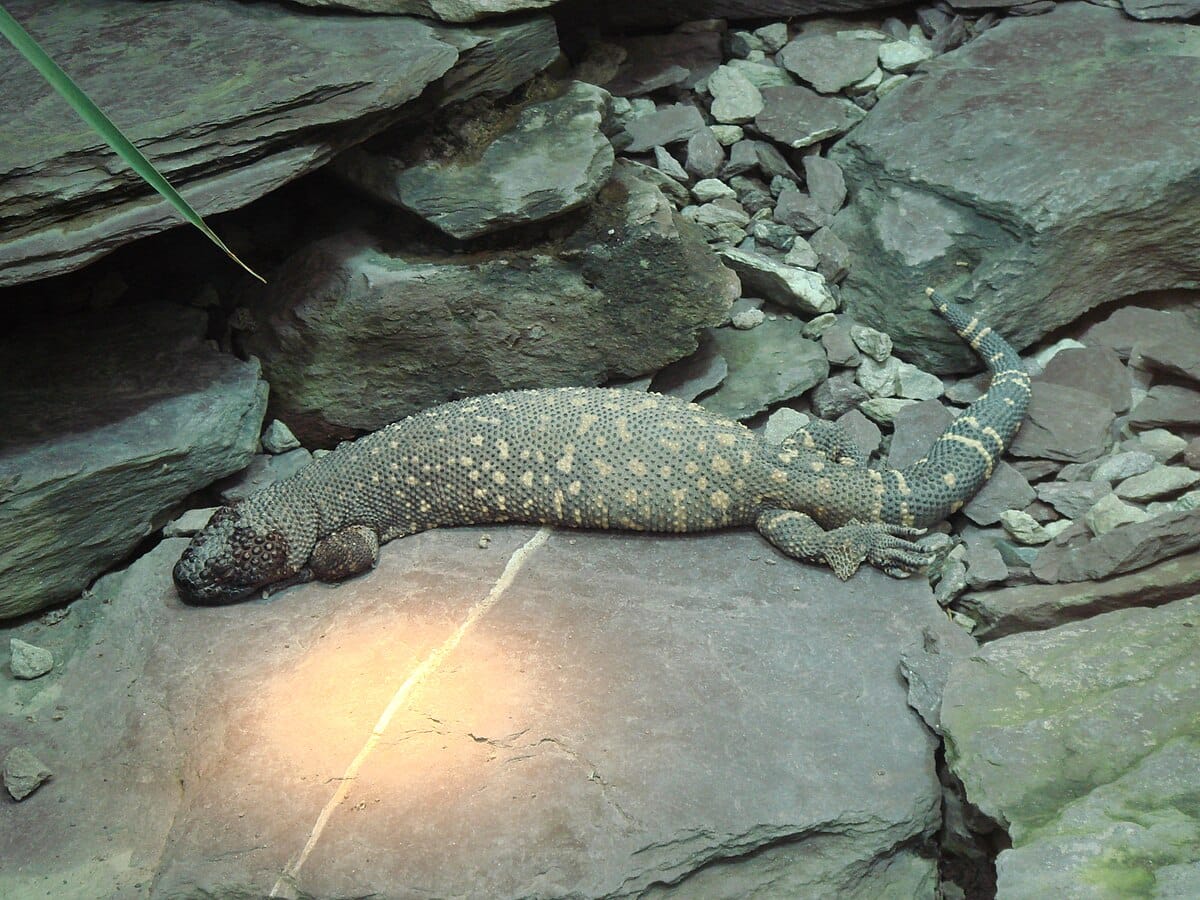
The Mexican Beaded Lizard is a close relative of the Gila Monster and one of the few venomous lizards in the world. Native to Mexico and parts of Guatemala, this striking reptile is covered in glossy, bead-like scales that give it a unique, armored appearance. Its slow, deliberate movements hide a potent weapon—venom that can incapacitate prey with remarkable efficiency.
These large lizards can grow up to 3 feet long, with black skin patterned with bands or spots of yellow or pink. Their thick tails store fat reserves, enabling them to survive long dry seasons without frequent feeding. Like the Gila Monster, they spend much of their time in burrows or rock crevices, emerging at night to hunt birds, eggs, and small mammals.
While the venom of the Mexican Beaded Lizard is not usually fatal to humans, it causes intense pain and swelling. Interestingly, this venom contains compounds used in medical research to treat diabetes and other diseases, highlighting the scientific value of this rare species.
Despite their fearsome reputation, Mexican Beaded Lizards are shy and secretive, avoiding confrontation whenever possible. They are now considered a near-threatened species due to habitat loss and illegal collection, prompting conservation efforts across Mexico to protect their remaining habitats.
Observing a Mexican Beaded Lizard in the wild is an extraordinary experience—it’s like glimpsing a living relic from a time when dinosaurs roamed the Earth.
Identification Tips: Large, slow-moving lizard with bead-like scales, venomous bite, dark coloration with yellow or pink markings, native to Mexico and Central America.
22. Common Collared Lizard (Crotaphytus collaris)
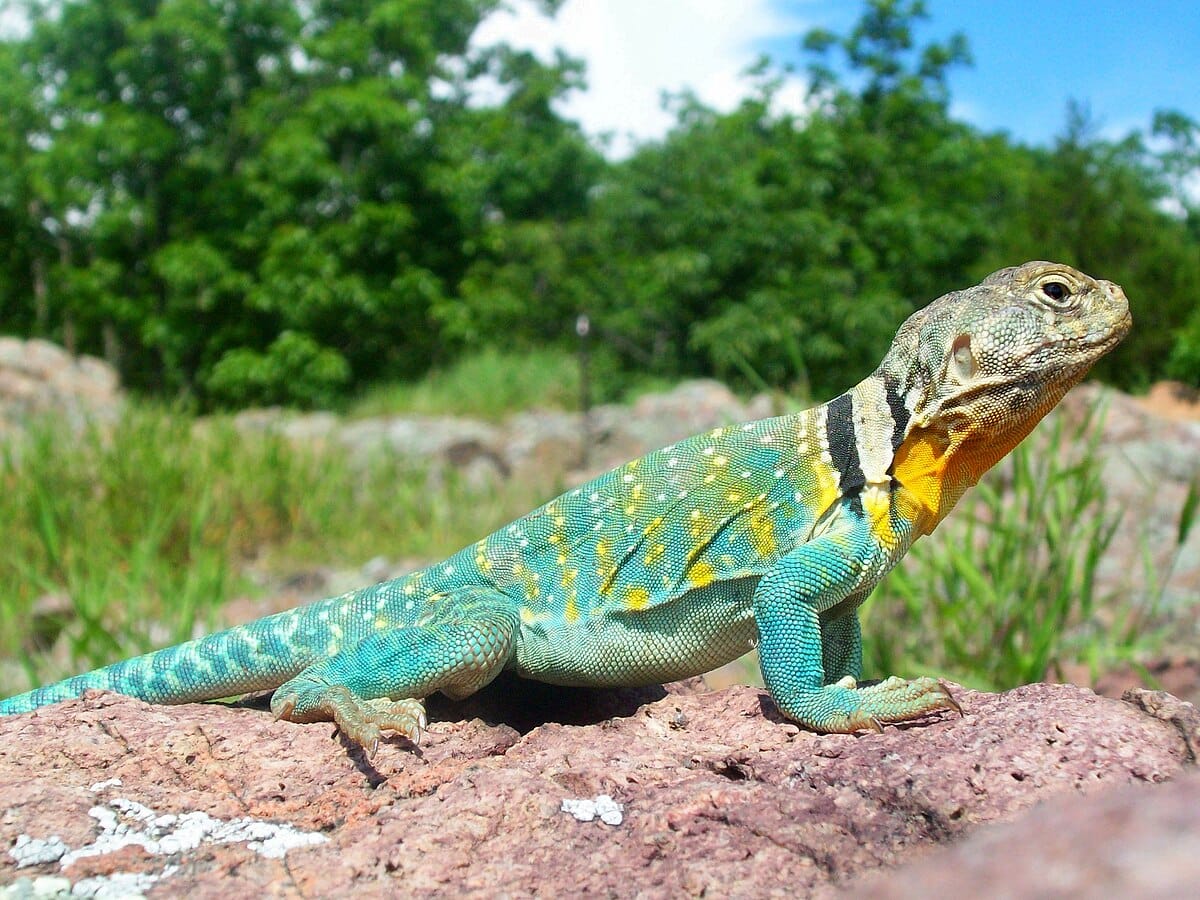
The Common Collared Lizard is one of North America’s most striking reptiles, easily recognizable by the bold black bands encircling its neck—like a pair of collars. Found throughout the arid regions of the central and southwestern United States, this vibrant lizard is famous for its speed, agility, and stunning colors that make it look almost tropical despite its desert home.
Adult males boast vivid shades of green, yellow, blue, and orange across their bodies, while females display more subdued tones of brown and tan for camouflage. These color differences are most noticeable during breeding season when males flaunt their brightest hues to attract mates and assert dominance. Their strong hind legs allow them to run upright on two legs, a trait that helps them sprint swiftly across open terrain to escape predators or chase prey.
Collared Lizards are active hunters, feeding on insects, spiders, and occasionally smaller lizards. They rely on sharp eyesight to spot movement from a distance and pounce with lightning speed. Their territorial nature makes them fascinating to observe—males often engage in head-bobbing displays or push-ups to warn rivals to stay away.
These lizards thrive in rocky, sun-drenched habitats where they can bask and retreat into crevices for safety. They are diurnal and most active during the hottest part of the day. In winter, they brumate (a reptilian form of hibernation) in underground burrows until spring warmth returns.
Beyond their beauty, Collared Lizards play a vital role in desert ecosystems by controlling insect populations and serving as prey for birds and snakes. Watching one dash upright across the desert floor is like witnessing a miniature dinosaur in motion—graceful, colorful, and full of character.
Identification Tips: Medium-sized lizard with two black neck bands, vibrant coloration in males, runs bipedally, native to the arid regions of the U.S. and northern Mexico.
23. Shingleback Lizard (Tiliqua rugosa)
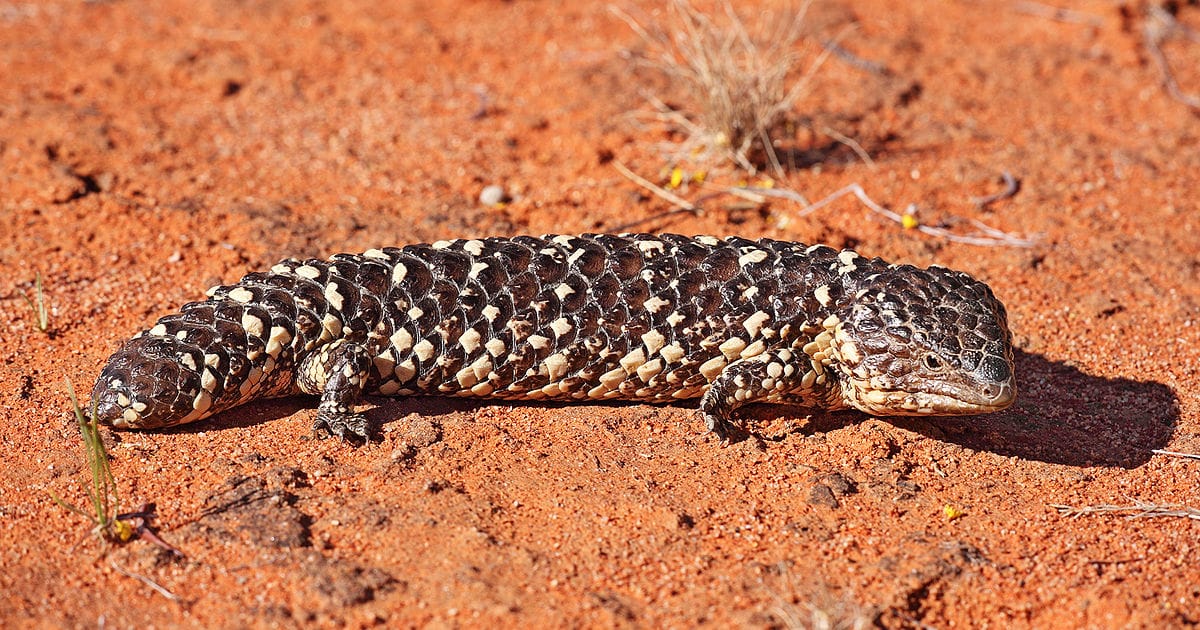
The Shingleback Lizard, also known as the Sleepy Lizard, Bobtail Lizard, or Pinecone Skink, is one of Australia’s most distinctive reptiles. With its tough, armor-like scales and chunky body, it looks more like a walking pinecone than a typical lizard.
Appearance and Identification
The Shingleback measures about 10–14 inches in length and has a short, stumpy tail that closely resembles its head — a clever evolutionary defense against predators. Its rough, overlapping scales come in shades of brown, yellow, or gray, often with lighter speckles that help it blend into Australia’s dry scrublands. Its most iconic feature is its deep blue tongue, which it displays when threatened to startle predators.
Behavior and Diet
Unlike most reptiles, the Shingleback is known for its monogamous behavior — pairing with the same mate year after year. During the breeding season, pairs can often be seen traveling side by side, a rare sight among lizards.
These slow-moving omnivores feed on flowers, fruits, leaves, snails, and insects. They’re also known for their gentle disposition, often allowing humans to observe them up close.
Habitat and Distribution
Shinglebacks are found throughout southern and western Australia, thriving in semi-arid environments, open woodlands, and grasslands. Their sturdy build and tolerance to heat make them perfectly adapted to Australia’s harsh climate.
Fun Fact
Shingleback Lizards can live for more than 30 years in the wild — and even longer in captivity. Their devotion to long-term mates has earned them the nickname “the world’s most romantic lizard.”
24. Western Fence Lizard (Sceloporus occidentalis)
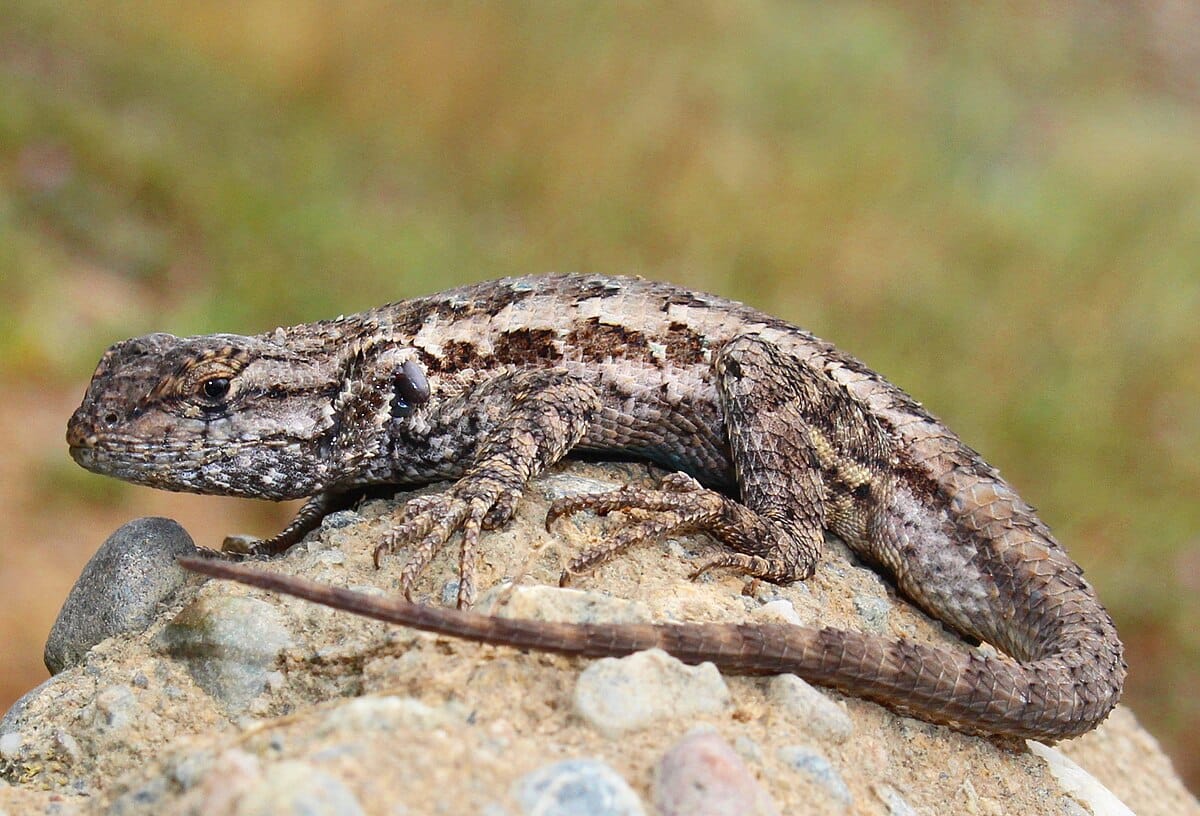
The Western Fence Lizard, also known as the “Blue-Belly Lizard,” is a familiar sight across the western United States, basking on rocks, logs, and fences under the bright sun. This hardy species plays an unexpected role in human health—its blood helps reduce the spread of Lyme disease by killing the bacteria that cause it when ticks feed on them. It’s a small creature with a big impact.
These lizards typically measure 5–8 inches in length, with rough, spiny scales and a gray or brown body. Males sport vivid blue patches on their bellies and throats, which they display during courtship or territorial defense. Their coloration blends perfectly with their rugged habitats, providing excellent camouflage against predators.
Western Fence Lizards are active during the day, feeding on insects, spiders, and small invertebrates. They’re known for their “push-up” displays—a combination of dominance signal and fitness demonstration. During cold months, they brumate in crevices or beneath logs, emerging again in spring to bask and breed.
From coastal scrublands to pine forests, this lizard thrives in diverse environments. Its tolerance for human presence means it’s often seen around homes and hiking trails, darting quickly out of sight when disturbed. Despite its commonness, the Western Fence Lizard remains an essential species in its ecosystem, controlling pests and even protecting humans indirectly from disease.
Identification Tips: Small gray-brown lizard with rough scales and blue belly patches, diurnal, insect-eating, native to western North America.
25. Water Monitor (Varanus salvator)
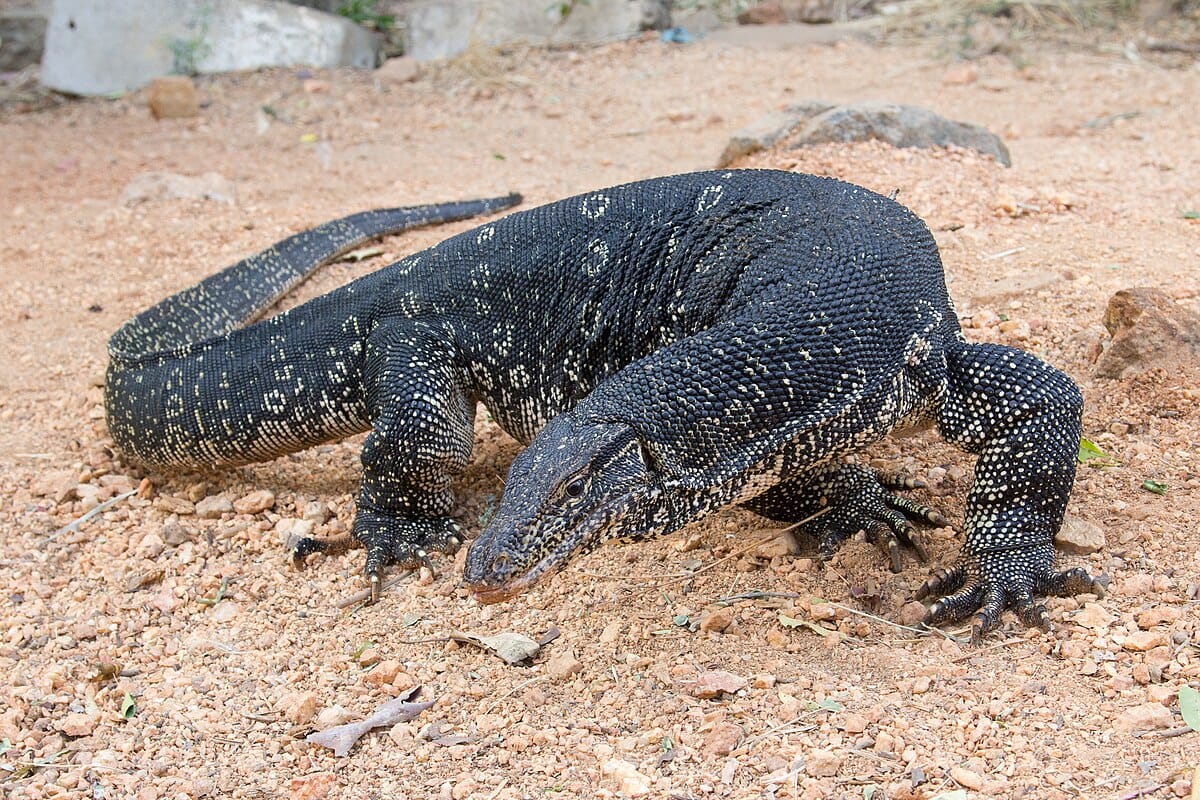
The Water Monitor is one of the largest and most powerful lizards in Asia, second only to the Komodo Dragon in size. Native to South and Southeast Asia, including Thailand, Indonesia, and Sri Lanka, this impressive reptile thrives near rivers, swamps, and mangroves—earning its name from its affinity for water.
These giants can grow up to 9 feet long, with sleek, muscular bodies and long, whip-like tails. Their dark brown skin is patterned with yellow spots and bands, providing excellent camouflage in dappled sunlight. Water Monitors are strong swimmers, capable of staying submerged for up to 30 minutes while hunting or evading danger.
Highly intelligent and opportunistic, they feed on anything they can overpower—fish, crabs, birds, eggs, rodents, and carrion. They are excellent climbers and often raid bird nests or scavenge around human settlements. Their forked tongue and sharp senses make them expert trackers, while their powerful claws help dig burrows and climb trees.
In many parts of Asia, Water Monitors coexist closely with people, sometimes seen strolling through urban canals or temple grounds. Despite their intimidating size, they’re generally shy and will flee rather than fight when approached. However, they can defend themselves effectively with strong bites and tail lashes if cornered.
The Water Monitor represents the adaptability and strength of reptiles—capable of thriving in both wild jungles and bustling cities. Their presence near waterways is a testament to their resilience and intelligence, making them one of the most awe-inspiring lizards in the world.
Identification Tips: Very large lizard with dark brown and yellow-banded body, long tail, semi-aquatic, strong swimmer, native to South and Southeast Asia.
26. Texas Horned Lizard (Phrynosoma cornutum)
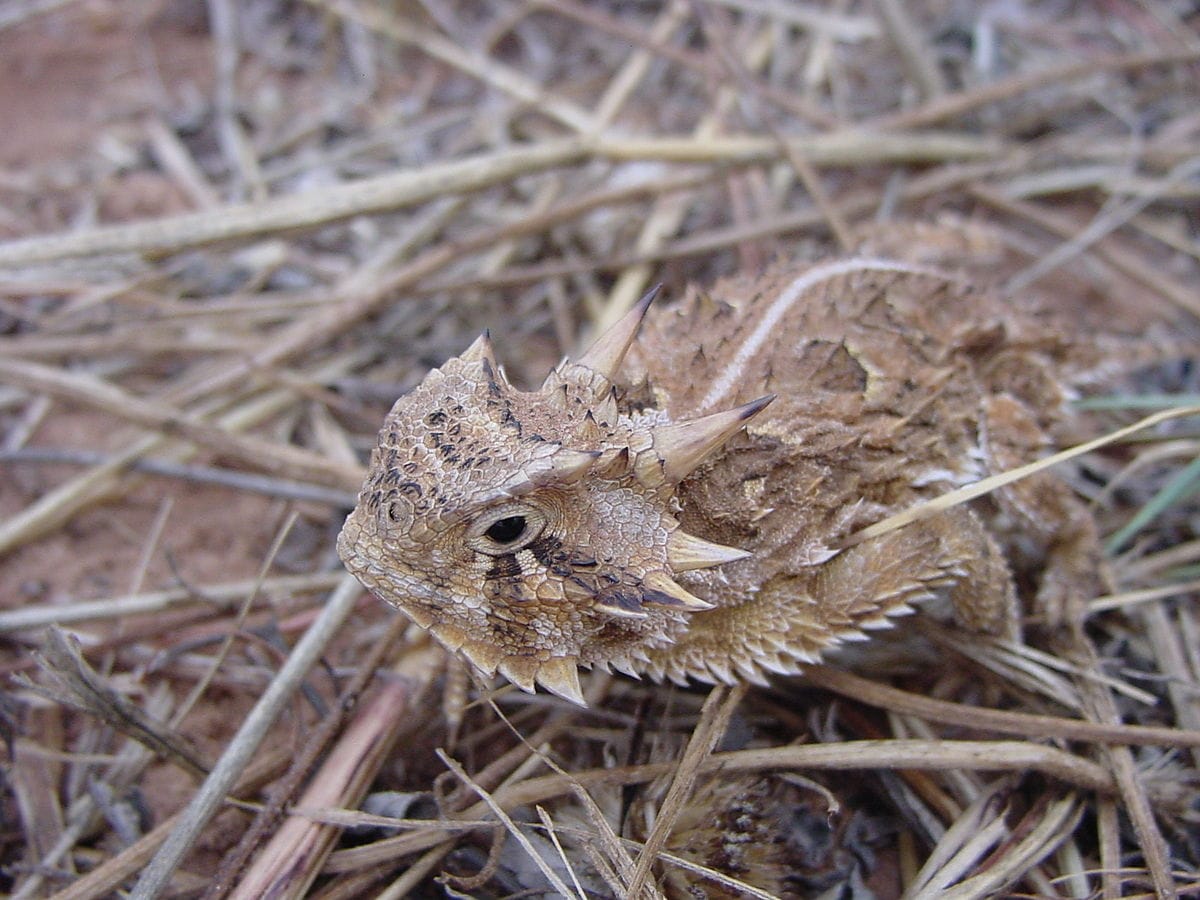
The Texas Horned Lizard, affectionately called the “Horny Toad,” is one of North America’s most iconic desert reptiles. Its squat, spiny body and crown of horn-like scales give it a prehistoric appearance, as if it were a tiny dinosaur wandering the sands of Texas and the southwestern United States.
These lizards are masters of camouflage. Their coloration—ranging from sandy brown to reddish hues—matches their surroundings perfectly, making them nearly invisible to predators. When threatened, they rely on an astonishing defense: they can squirt blood from their eyes to deter attackers, particularly canines like coyotes. This bizarre yet effective behavior is unique among lizards.
Texas Horned Lizards are insectivores, feeding primarily on ants, especially harvester ants. They have short, rounded bodies, and their wide stance allows them to flatten against the ground to absorb heat or hide from danger. Their slow movements and patient demeanor make them an interesting contrast to more active lizards.
Despite their tough appearance, these lizards are vulnerable to habitat loss, pesticide use, and the decline of ant populations. Once common across Texas, they have become less frequent in urbanized areas. Conservation efforts are ongoing to protect this distinctive symbol of the American Southwest.
Watching a Texas Horned Lizard basking motionless in the sun is like glimpsing a relic of ancient times—small yet resilient, armored yet peaceful, perfectly adapted to its harsh desert world.
Identification Tips: Small, flat-bodied lizard with spiny horns on head and back, sandy coloration, insectivorous, found in arid regions of the southwestern U.S.
27. Beaded Lizard (Heloderma horridum)
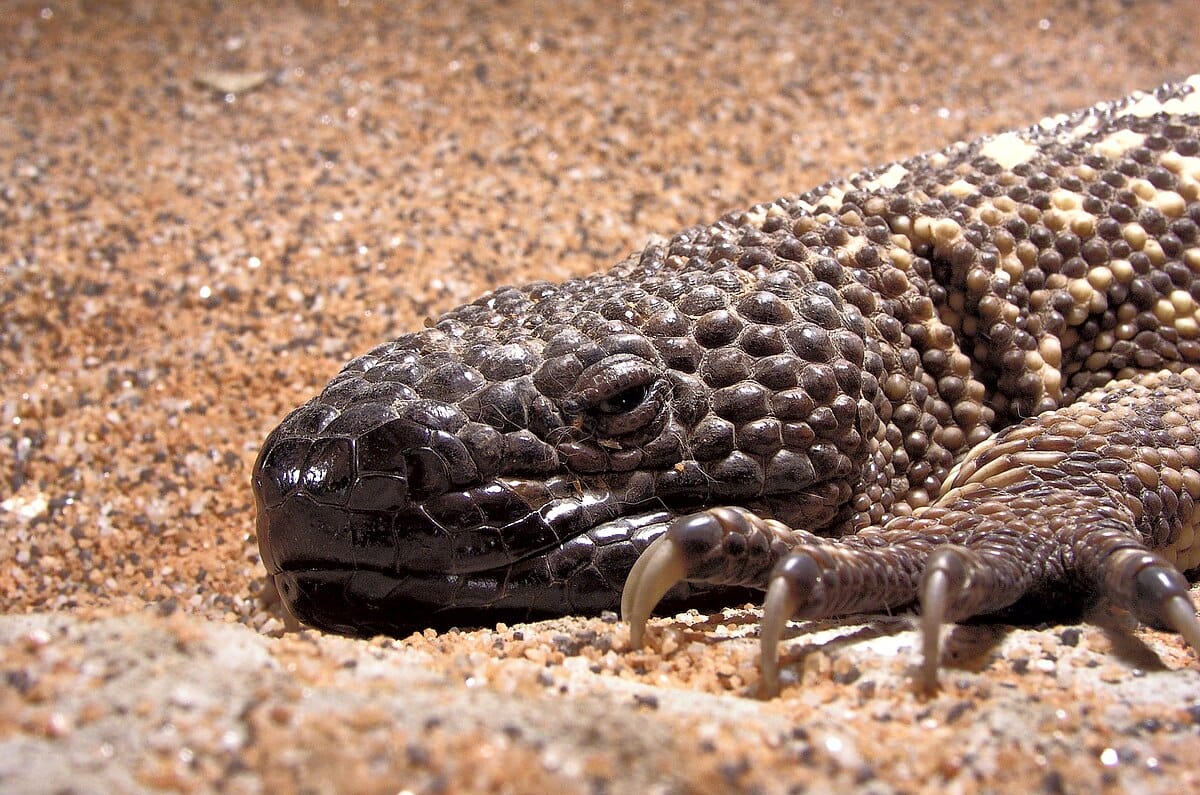
The Beaded Lizard of Mexico and Central America is one of the few venomous lizards on Earth, sharing this rare trait with its cousin, the Gila Monster. Despite its fearsome appearance and toxic bite, it is a slow-moving, reclusive creature that prefers to avoid confrontation whenever possible.
Its name comes from the bumpy, bead-like scales covering its thick skin. These scales, known as osteoderms, are small bone plates that give it a rugged, armored look. The Beaded Lizard’s coloration—black mixed with yellow or cream bands—acts as a warning to potential predators: “I’m not to be trifled with.”
These lizards can grow up to 3 feet long and spend much of their time underground, emerging mainly at night to feed on eggs, small mammals, and birds. Their venom, delivered through grooves in their lower teeth, is primarily used for defense and to subdue prey. Though their bite is extremely painful to humans, it is rarely fatal.
Beaded Lizards are symbols of survival, having remained almost unchanged for millions of years. Their slow metabolism allows them to go weeks without food, and they rely on fat stored in their tails to endure dry seasons. Scientists are also studying their venom for potential medical applications, including treatments for diabetes and heart disease.
In the wild, they are elusive and protected by law in many areas due to their rarity and ecological importance. The Beaded Lizard embodies both danger and beauty—a living reminder of the ancient lineage of reptiles that have outlasted the dinosaurs.
Identification Tips: Large, heavy-bodied venomous lizard with bead-like scales and yellow-black pattern, nocturnal, native to Mexico and Central America.
28. Fiji Banded Iguana (Brachylophus fasciatus)
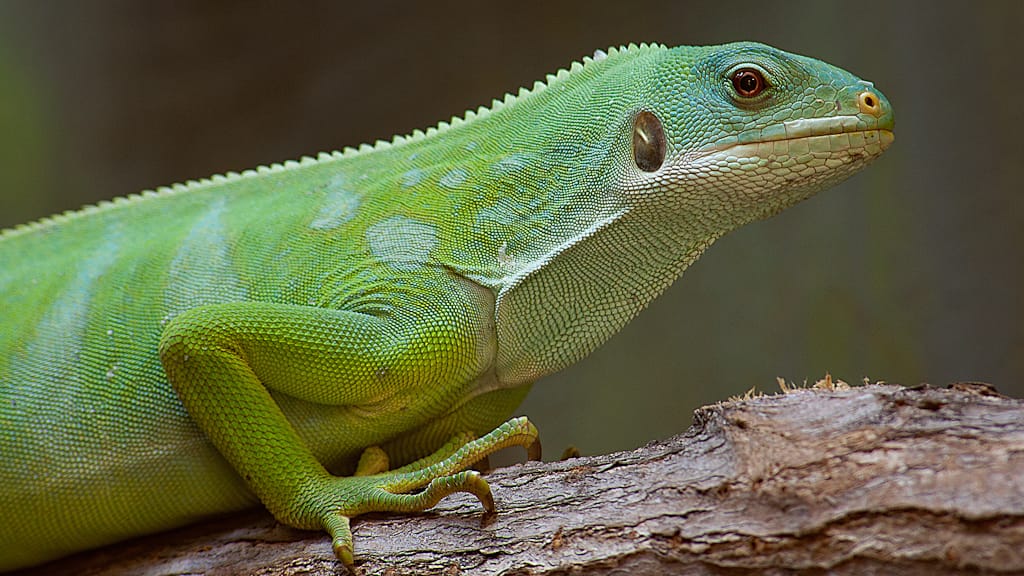
The Fiji Banded Iguana is one of the most visually stunning lizards on the planet—a living jewel of the South Pacific. Found only on the islands of Fiji, this emerald-green reptile with its turquoise-blue bands is a symbol of the islands’ lush, tropical beauty. Sadly, it is also one of the world’s rarest iguanas, threatened by habitat loss and invasive species.
Males display striking bright green coloration with bluish or whitish bands across their bodies, while females are typically solid green for better camouflage. Their eyes are golden and intelligent-looking, and their long tails help them balance among tree branches. These arboreal lizards spend most of their time in the canopy, basking in sunlight and feeding on leaves, flowers, and fruit.
The Fiji Banded Iguana is diurnal and highly territorial. Males perform head-bobbing displays and color changes during breeding season to assert dominance or attract mates. They are gentle and graceful in movement but fiercely defensive of their home trees.
Unfortunately, these beautiful creatures face severe threats from deforestation and the introduction of predators like rats and cats. Conservation programs in Fiji now protect their remaining habitats, and breeding efforts in captivity have helped stabilize some populations.
Graceful, radiant, and deeply connected to its tropical home, the Fiji Banded Iguana is a living emblem of island biodiversity—and a reminder of how fragile such natural treasures can be.
Identification Tips: Bright green arboreal iguana with blue or turquoise bands, diurnal herbivore, native to the forests of Fiji.
29. Thorny Devil (Moloch horridus)
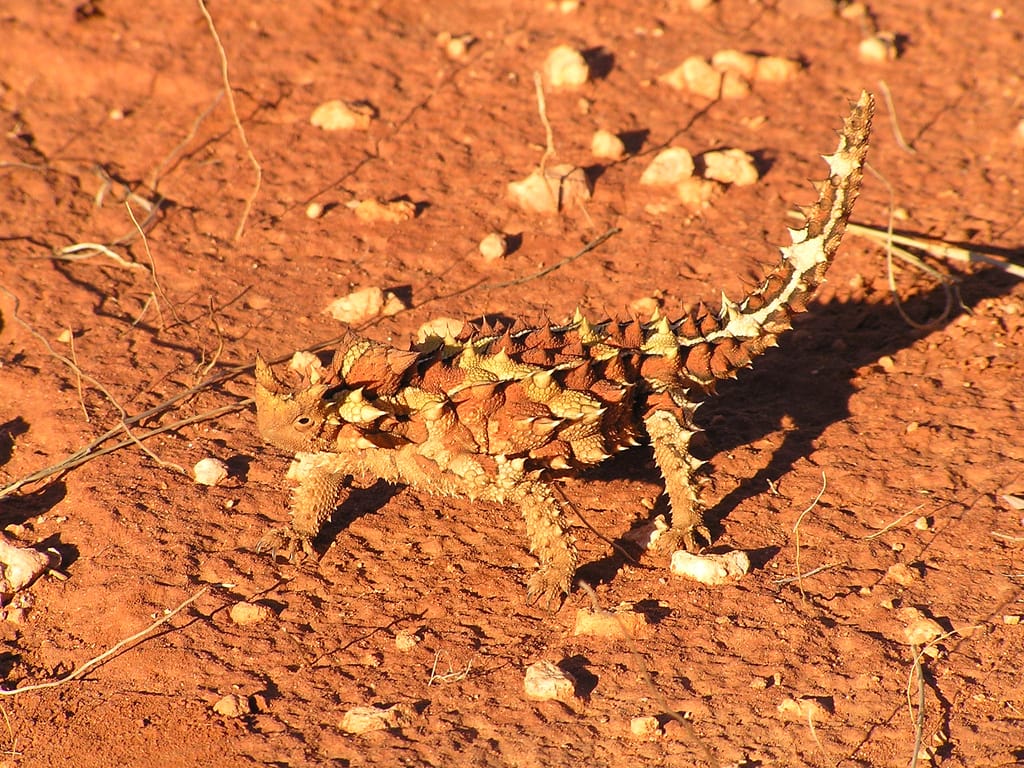
The Thorny Devil is perhaps the most bizarre-looking lizard on Earth. Native to the arid deserts of Australia, this small reptile looks like a living cactus—covered head to tail in sharp, conical spikes that deter predators and help it survive in one of the planet’s harshest environments.
Only about 8 inches long, the Thorny Devil’s entire body is armored with pointed scales, and it even has a “false head” on the back of its neck. When threatened, it lowers its real head and presents the false one as a decoy. Its coloration—ranging from pale yellow to deep reddish-brown—changes with temperature and blends perfectly with desert sand and rock.
Despite its fierce appearance, the Thorny Devil is a gentle insectivore, feeding almost exclusively on ants. It uses its sticky tongue to capture hundreds of ants at a time. One of its most remarkable adaptations is the ability to collect and drink water through its skin. Tiny grooves between its scales channel dew and rain directly to its mouth—a life-saving feature in dry habitats.
Thorny Devils move slowly and deliberately, rocking back and forth as they walk, possibly to confuse predators. They are a true marvel of desert evolution—resilient, efficient, and utterly unique. Seeing one in the wild is like witnessing a creature from another era, perfectly sculpted by millions of years of adaptation to Australia’s outback.
Identification Tips: Small desert lizard covered in spines, coloration varies with temperature, ant-eating specialist, water-absorbing skin, native to central Australia.
30. Plumed Basilisk (Basiliscus plumifrons)
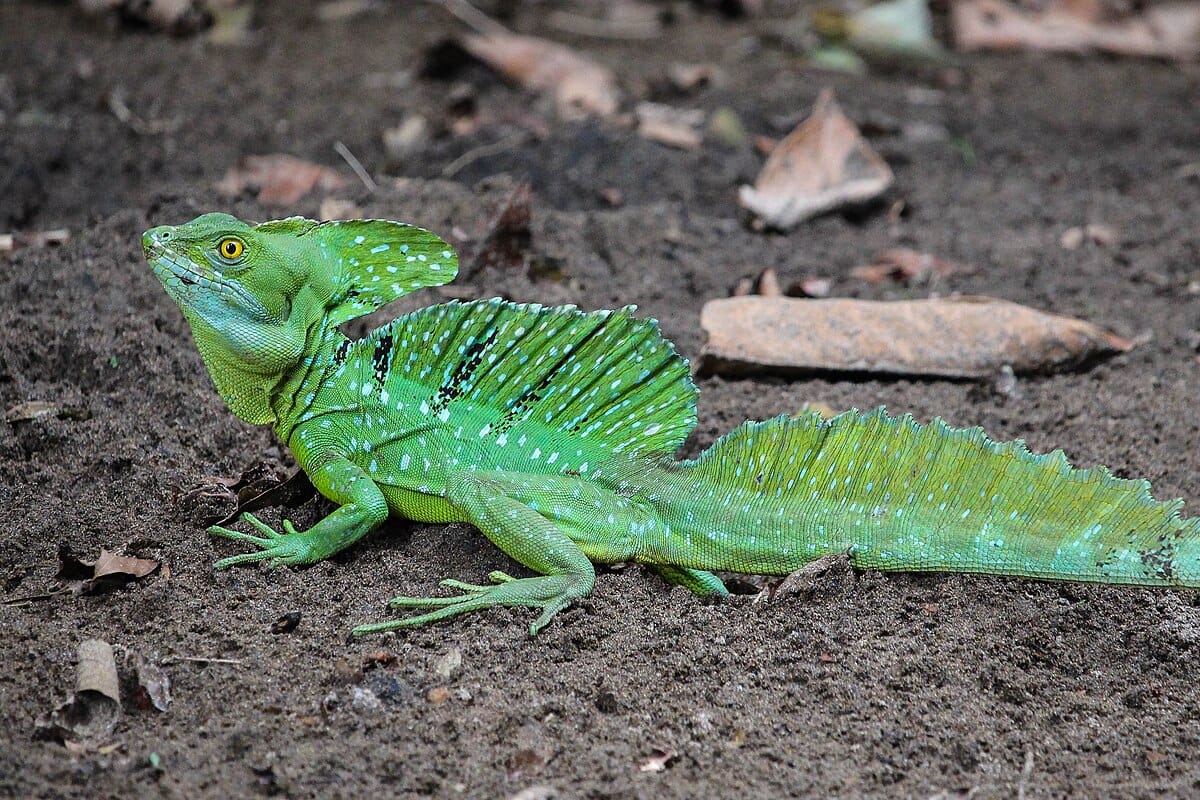
The Plumed Basilisk, often called the “Jesus Christ Lizard,” has one of nature’s most amazing talents—it can run across the surface of water! Found in the rainforests of Central America, this agile reptile is both beautiful and extraordinary, captivating anyone lucky enough to spot it in the wild.
Males have tall crests on their heads, backs, and tails, giving them a regal, dragon-like appearance. Their scales shimmer in shades of bright green and turquoise, with fine yellow markings. The long toes on their hind feet are fringed with specialized scales that create air pockets when they run, allowing them to sprint across water for several meters before sinking and swimming away.
Basilisks are excellent climbers and swimmers, spending much of their time near rivers and forest edges. They are omnivorous, eating insects, small vertebrates, flowers, and fruit. Males are territorial and use their crests to intimidate rivals and attract mates during the breeding season.
When threatened, instead of hiding, the Plumed Basilisk makes a dramatic escape—dashing upright across water to the safety of nearby vegetation. This spectacle of physics and biology is one of the most remarkable sights in the reptile world.
Revered by locals and adored by nature lovers, the Plumed Basilisk stands as a perfect symbol of tropical rainforest mystery and magic.
Identification Tips: Bright green lizard with head and tail crests, capable of running on water, semi-aquatic, native to Central American rainforests.
31. Satanic Leaf-Tailed Gecko (Uroplatus phantasticus)
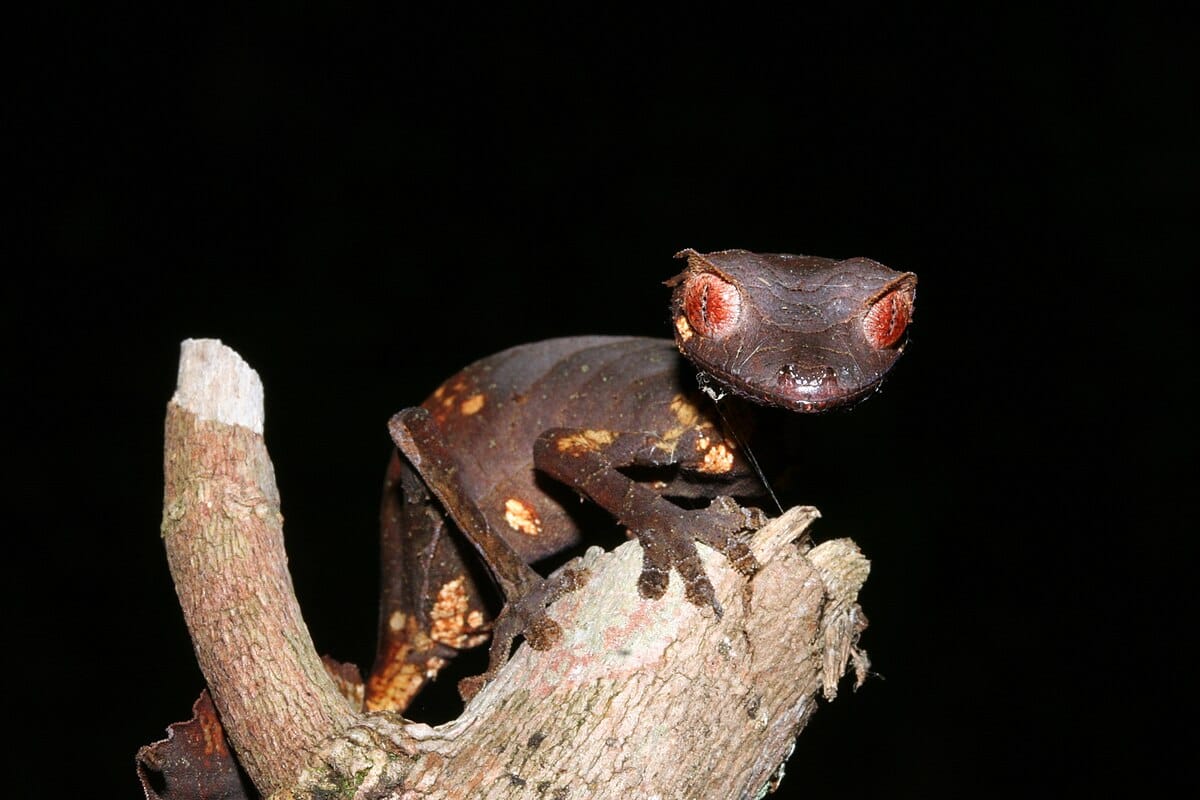
Native to the rainforests of Madagascar, the Satanic Leaf-Tailed Gecko is a master of disguise. Its body perfectly mimics a dead leaf—complete with jagged edges, brownish tones, and even patterns that resemble leaf veins. This remarkable camouflage allows it to vanish into the forest floor, hiding from both predators and prey.
Appearance and Identification
This small gecko, measuring only 2.5–3 inches in length, features a flattened body, triangular head, and tail that looks uncannily like a curled, decaying leaf. Its coloration ranges from mottled brown to gray or even reddish hues, depending on its habitat. When threatened, it flattens its body against a branch and closes its eyes, becoming nearly invisible.
Behavior and Adaptations
Nocturnal by nature, the Satanic Leaf-Tailed Gecko spends its nights hunting small insects like moths and crickets. It relies heavily on stealth rather than speed—its camouflage gives it all the advantage it needs. Interestingly, when cornered, it may open its mouth wide to reveal a bright red interior as a warning display.
Habitat and Distribution
This species thrives in the humid lowland and montane forests of Madagascar. Due to deforestation and habitat loss, its population is declining, but it’s still found in several protected areas across the island.
Fun Fact
Despite its intimidating name, the Satanic Leaf-Tailed Gecko is completely harmless and is one of the most sought-after species among reptile enthusiasts for its surreal appearance.
32. Blue Crested Lizard (Calotes mystaceus)
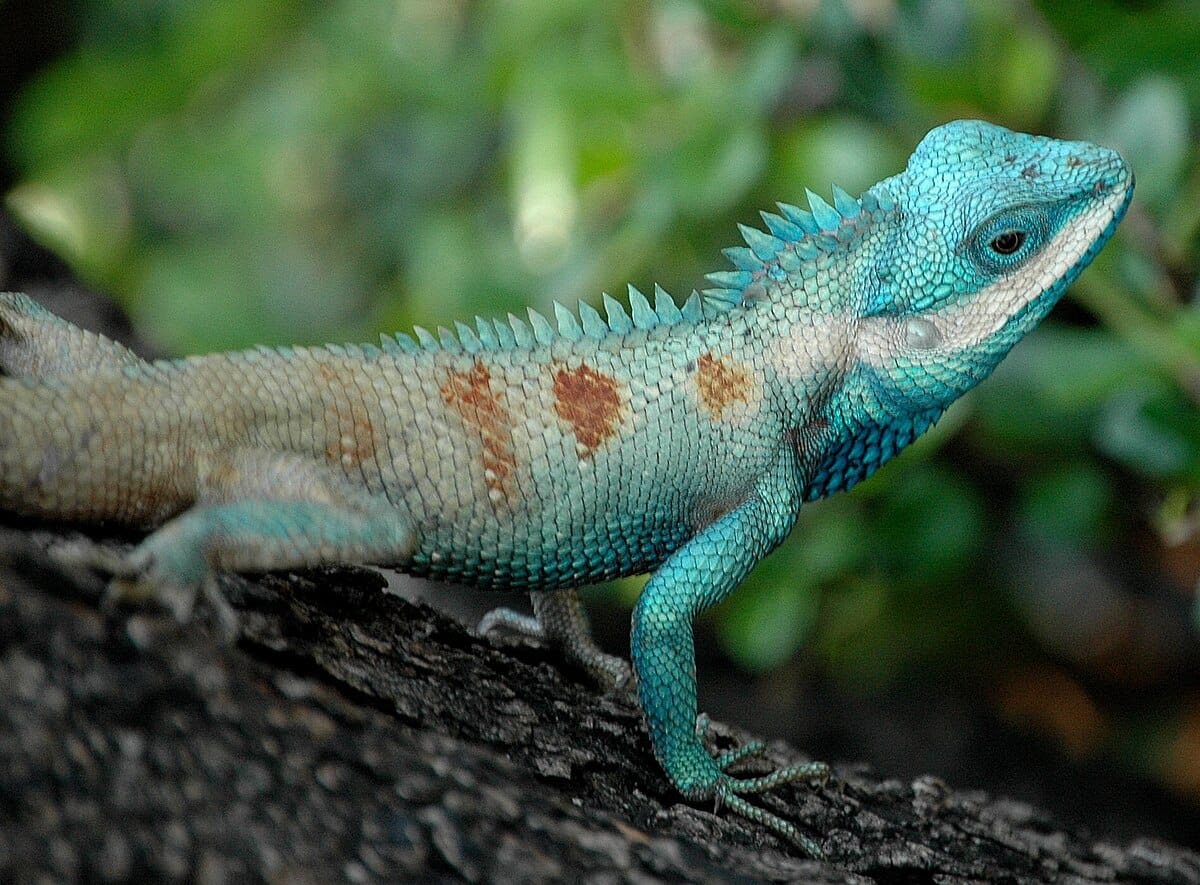
The Blue Crested Lizard, also known as the Indo-Chinese Forest Lizard, is one of Southeast Asia’s most dazzling reptilian residents. Males display a striking turquoise-blue body with a bold crest running from the head to the back—colors that intensify during the breeding season.
Appearance and Identification
These medium-sized lizards typically grow up to 12 inches long. Their bodies are slim but muscular, built for both climbing and sprinting. Males are especially colorful, with vibrant blue and green tones, while females are more subdued in color, blending into their environment for protection.
Behavior and Diet
Active during the day, Blue Crested Lizards are agile hunters that prey on insects like beetles, ants, and grasshoppers. They are often seen basking on tree trunks or fence posts, bobbing their heads in territorial displays. During mating season, males perform dramatic push-up displays and color changes to impress females and ward off rivals.
Habitat and Distribution
They are found throughout Thailand, Myanmar, Cambodia, Laos, and Vietnam, preferring tropical forests, gardens, and urban areas with trees. Their ability to adapt to human environments makes them a common sight in Southeast Asia.
Fun Fact
Blue Crested Lizards can change their color intensity based on mood and temperature—though not as dramatically as true chameleons.
33. Jeweled Lacerta (Timon lepidus)
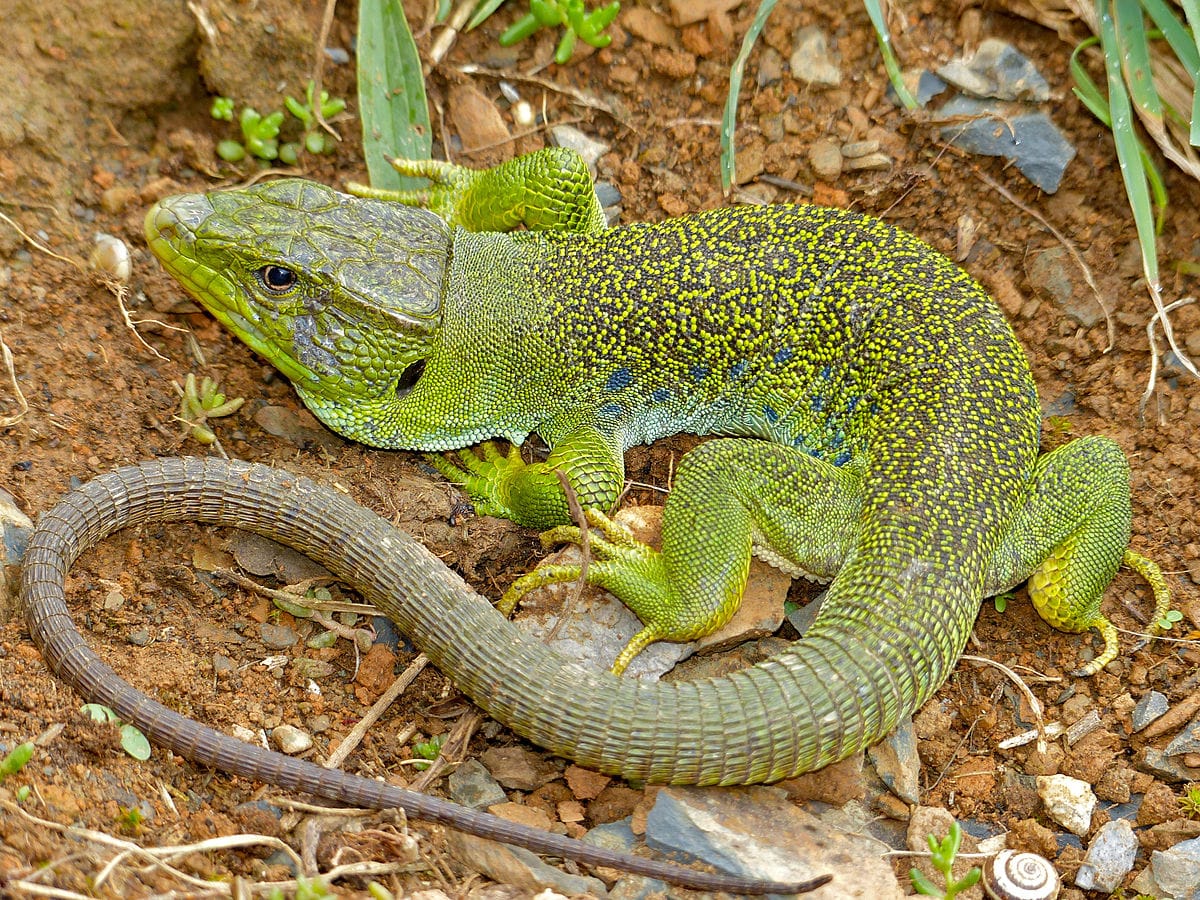
The Jeweled Lacerta, or Ocellated Lizard, is Europe’s largest and most vividly patterned lizard. Native to the Iberian Peninsula and parts of France, this species dazzles with its emerald-green body adorned with blue “eye spots” along its sides.
Appearance and Identification
Jeweled Lacertas can reach up to 24 inches in length, with males being slightly larger than females. Their scales shimmer in sunlight, giving them a jewel-like appearance. The combination of green, yellow, and blue makes them one of the most photogenic reptiles in the world.
Behavior and Diet
These lizards are highly active during the day and primarily terrestrial. They feed on insects, snails, small mammals, and occasionally fruit. Jeweled Lacertas are territorial and will defend their area vigorously against intruders.
Habitat and Distribution
They inhabit Mediterranean forests, grasslands, and rocky areas where they can bask in the sun. Due to habitat destruction and predation by cats and birds, some populations have declined, though they remain common in many rural areas.
Fun Fact
In southern Spain, locals refer to this reptile as “lagarto ocelado,” meaning “spotted lizard,” and consider it a good omen when seen in gardens.
34. Sandfish Skink (Scincus scincus)
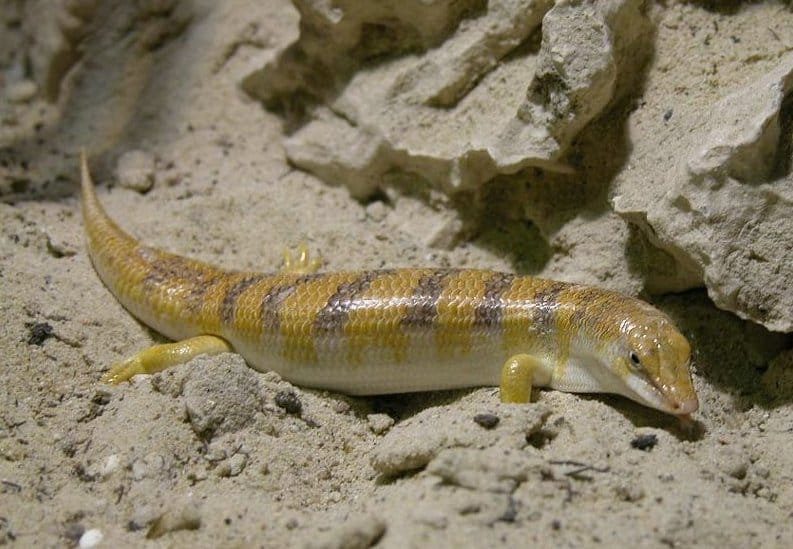
Few reptiles are as fascinating as the Sandfish Skink, a lizard that “swims” through sand as effortlessly as fish move through water. Found in the deserts of North Africa and the Arabian Peninsula, this species is a master of desert adaptation.
Appearance and Identification
The Sandfish Skink has a smooth, shiny, golden body with short limbs and a wedge-shaped snout—perfect for burrowing. Its scales are fine and slippery, reducing friction as it moves beneath the sand. Adults typically measure around 6–8 inches long.
Behavior and Adaptations
When threatened or seeking cooler temperatures, it dives headfirst into the sand, using its limbs in a swimming motion. It feeds mainly on small insects like beetles and termites, which it detects through subtle vibrations on the surface.
Habitat and Distribution
This species is found in arid regions across Egypt, Libya, Algeria, and Saudi Arabia. It thrives in areas with fine, loose sand dunes where it can burrow easily.
Fun Fact
The Sandfish’s unique locomotion has inspired robotics engineers, who study its movement to design sand-traversing machines.
35. Chinese Water Dragon (Physignathus cocincinus)
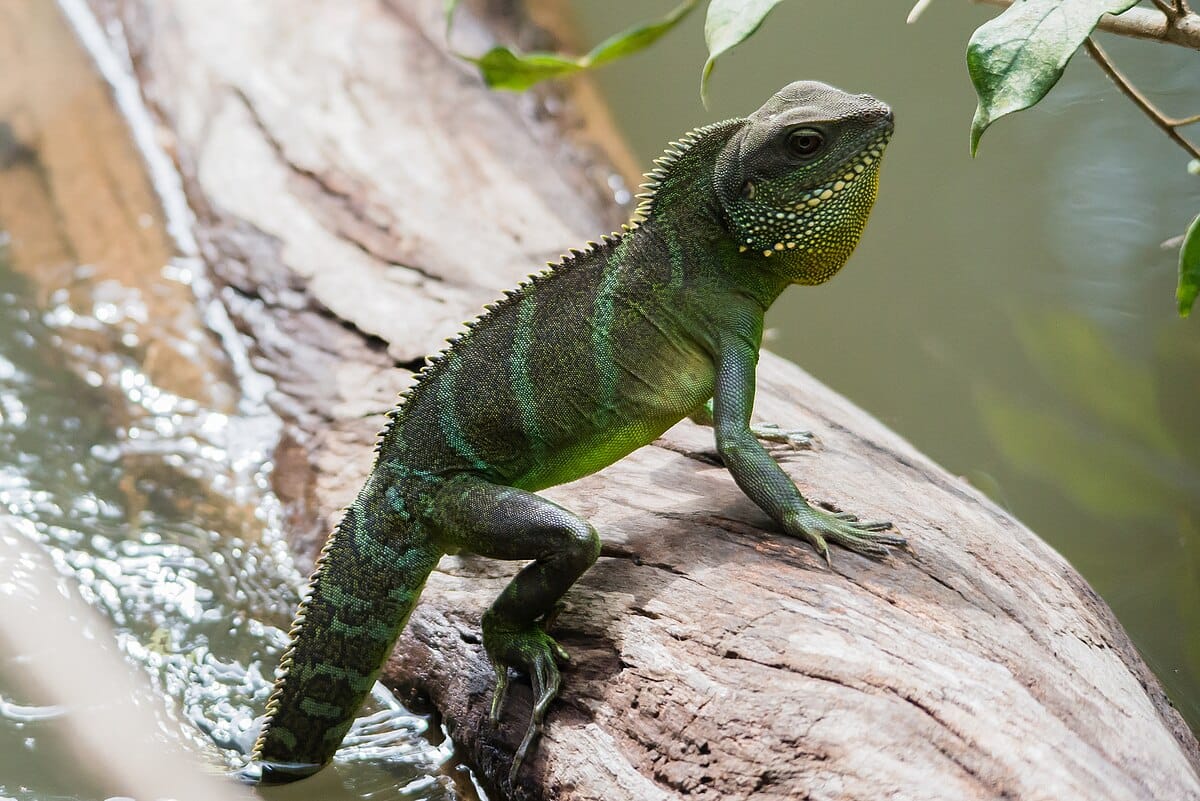
The Chinese Water Dragon is one of the most striking semi-aquatic lizards in the world, easily recognizable by its bright green body, long tail, and spiny dorsal crest. These dragons are native to Southeast Asia and are a popular choice among reptile enthusiasts for their docile nature and impressive appearance.
Appearance and Identification
Chinese Water Dragons can grow up to 3 feet long, with their tails making up nearly two-thirds of their total length. They have smooth scales, strong limbs for climbing, and expressive eyes that can rotate independently—similar to a chameleon’s. Males tend to have larger crests and more vivid coloration than females.
Behavior and Diet
Highly arboreal and diurnal, these dragons spend much of their time basking on branches overhanging water. When startled, they can leap into rivers and remain submerged for up to 25 minutes! Their diet includes crickets, worms, small fish, and occasionally fruit.
Habitat and Distribution
They are found across China, Vietnam, Laos, and Thailand, living in rainforests near rivers and streams. Their adaptability allows them to thrive in both wild and captive environments.
Fun Fact
In captivity, Chinese Water Dragons can recognize their owners and even learn to take food directly from hand—a rare trait among reptiles.
36. Caiman Lizard (Dracaena guianensis)
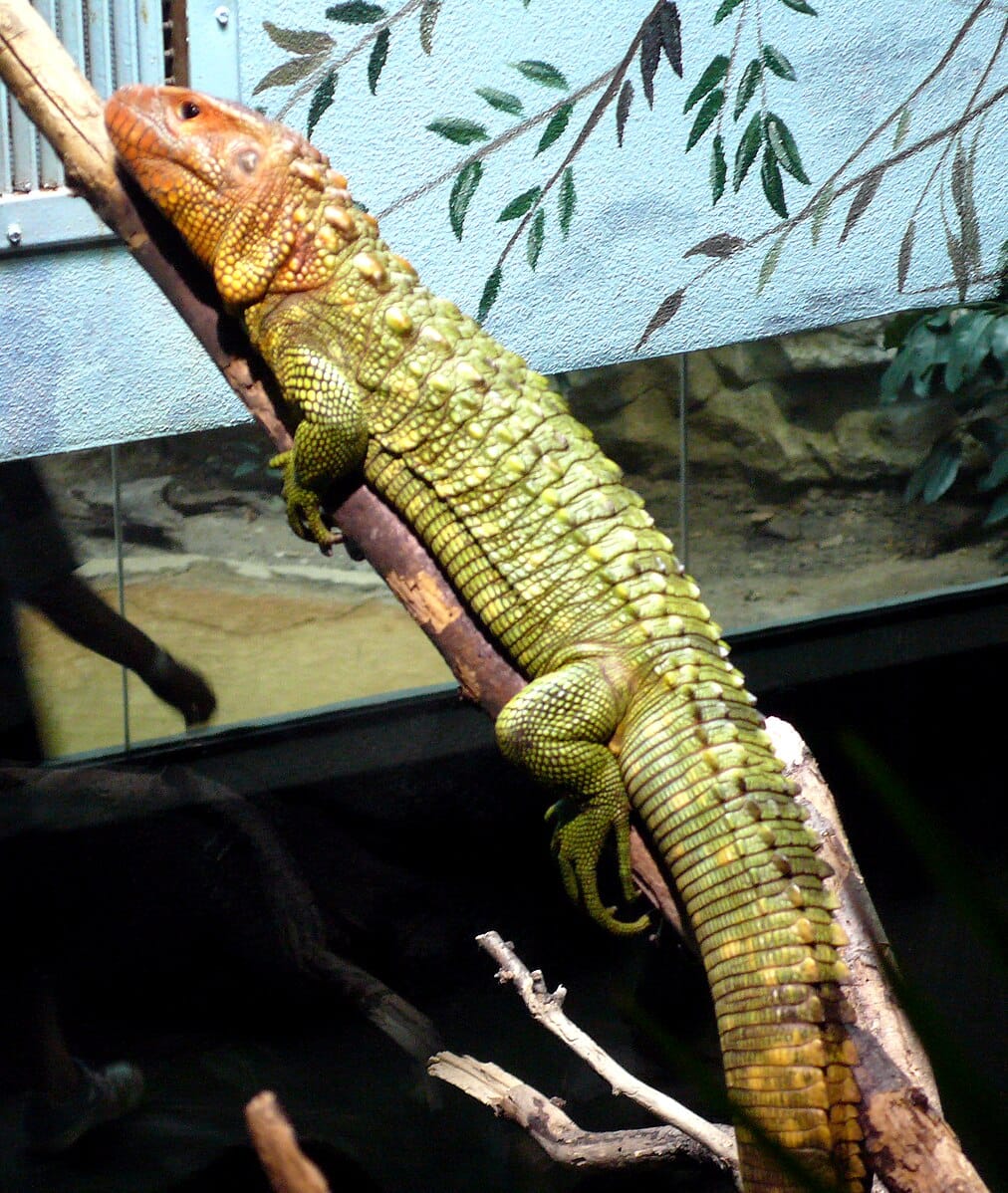
The Caiman Lizard is one of South America’s most unique reptiles — a semi-aquatic predator that combines the body of a tegu with the powerful tail of a crocodile. Known for its bright red head and armored green body, this species thrives in swampy rainforests and riverbanks across the Amazon Basin.
Appearance and Identification
Adult Caiman Lizards can reach 4 feet in length, with large, rectangular scales that resemble those of a caiman (hence their name). Their muscular tails help them swim efficiently, while their broad, powerful jaws are built to crush the hard shells of snails and crustaceans — their favorite food.
Behavior and Diet
Caiman Lizards spend much of their time basking on overhanging branches near water. When disturbed, they dive into the water and can remain submerged for long periods. Their diet consists mainly of aquatic snails, clams, and crustaceans, but they also eat fish, insects, and occasionally fruit.
Habitat and Distribution
This species is found throughout northern South America — including Brazil, Colombia, Ecuador, and Peru — where dense riverine forests provide both water and cover.
Fun Fact
Despite their fierce look, Caiman Lizards are gentle and intelligent creatures. In captivity, they are known to recognize their keepers and display calm, inquisitive behavior.
37. Sungazer Lizard (Smaug giganteus)
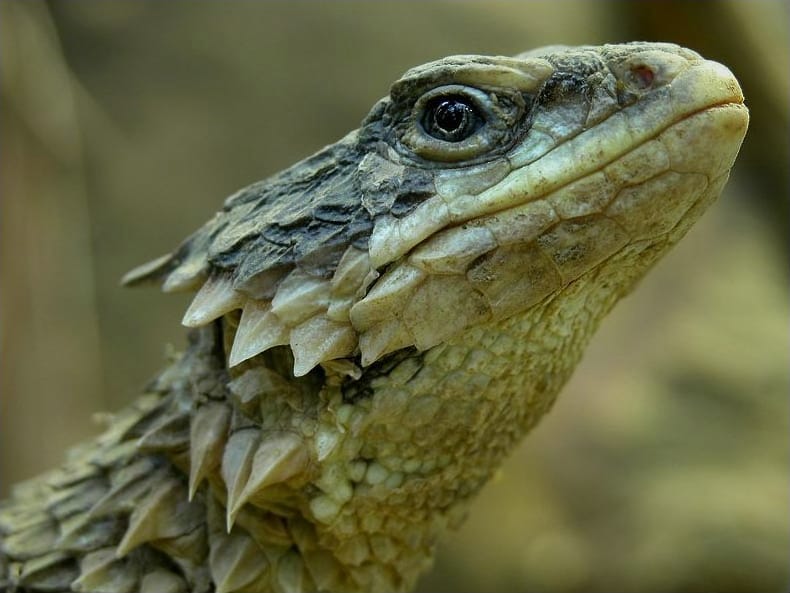
The Sungazer, also called the Giant Girdled Lizard, looks like a living miniature dragon. Endemic to South Africa, this heavily armored lizard gets its name from its habit of sitting at the entrance of its burrow, facing the sun — as if “gazing” at it.
Appearance and Identification
Sungazers are about 16 inches long and covered in spiny, golden-brown scales. Their sharp, keeled armor provides excellent protection from predators such as snakes and birds of prey. Males are slightly larger, with more pronounced spines along the tail.
Behavior and Diet
These lizards live in complex burrow systems, where they spend much of their time sheltering from extreme heat. They are diurnal and feed primarily on insects, particularly termites and beetles. Unlike many reptiles, Sungazers are social creatures that sometimes share burrows with others.
Habitat and Distribution
Native to the grasslands of South Africa’s Highveld region, Sungazers prefer open, sunlit areas with loose soil for digging. Sadly, habitat loss and illegal collection for the pet trade have made them a protected species.
Fun Fact
The scientific name Smaug giganteus was inspired by Smaug, the dragon from J.R.R. Tolkien’s The Hobbit — a fitting tribute to this armored “dragon” of the African plains.
38. Electric Blue Gecko (Lygodactylus williamsi)
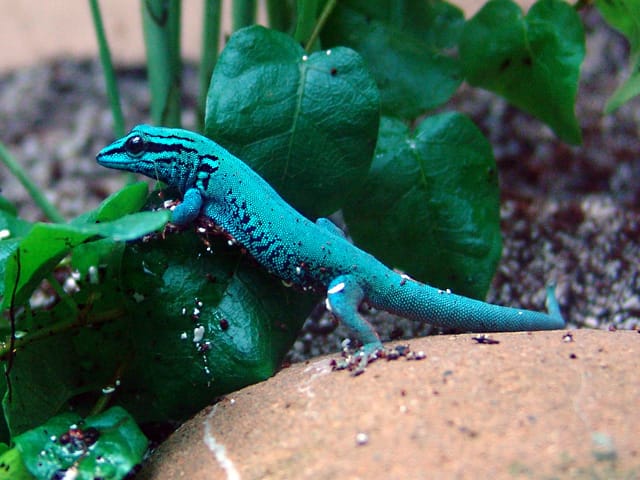
One of the most breathtaking reptiles on Earth, the Electric Blue Gecko is a tiny but radiant species found only in a small forest patch in Tanzania. Its neon-blue coloration and rarity have made it a symbol of reptile conservation.
Appearance and Identification
Males display an intense metallic-blue color with orange underbellies, while females are olive-green to brown. They’re very small — usually under 3 inches long — and have adhesive toe pads that let them climb smooth surfaces like glass or bamboo.
Behavior and Diet
Active during the day, Electric Blue Geckos feed on fruit nectar, small insects, and pollen. They are territorial and display vivid coloration to assert dominance or attract mates. Males are especially protective of their small territories.
Habitat and Distribution
This gecko lives exclusively in the Kimboza Forest of Tanzania, clinging to the smooth bark of the Pandanus (screw pine) trees. Unfortunately, their habitat has been heavily degraded, and illegal collection for the pet trade has further reduced wild populations.
Fun Fact
Because of their extreme rarity and dazzling color, these geckos are often called the “sapphire jewels” of the reptile world. Conservation efforts are currently underway to restore their population in the wild.
39. Jackson’s Chameleon (Trioceros jacksonii)
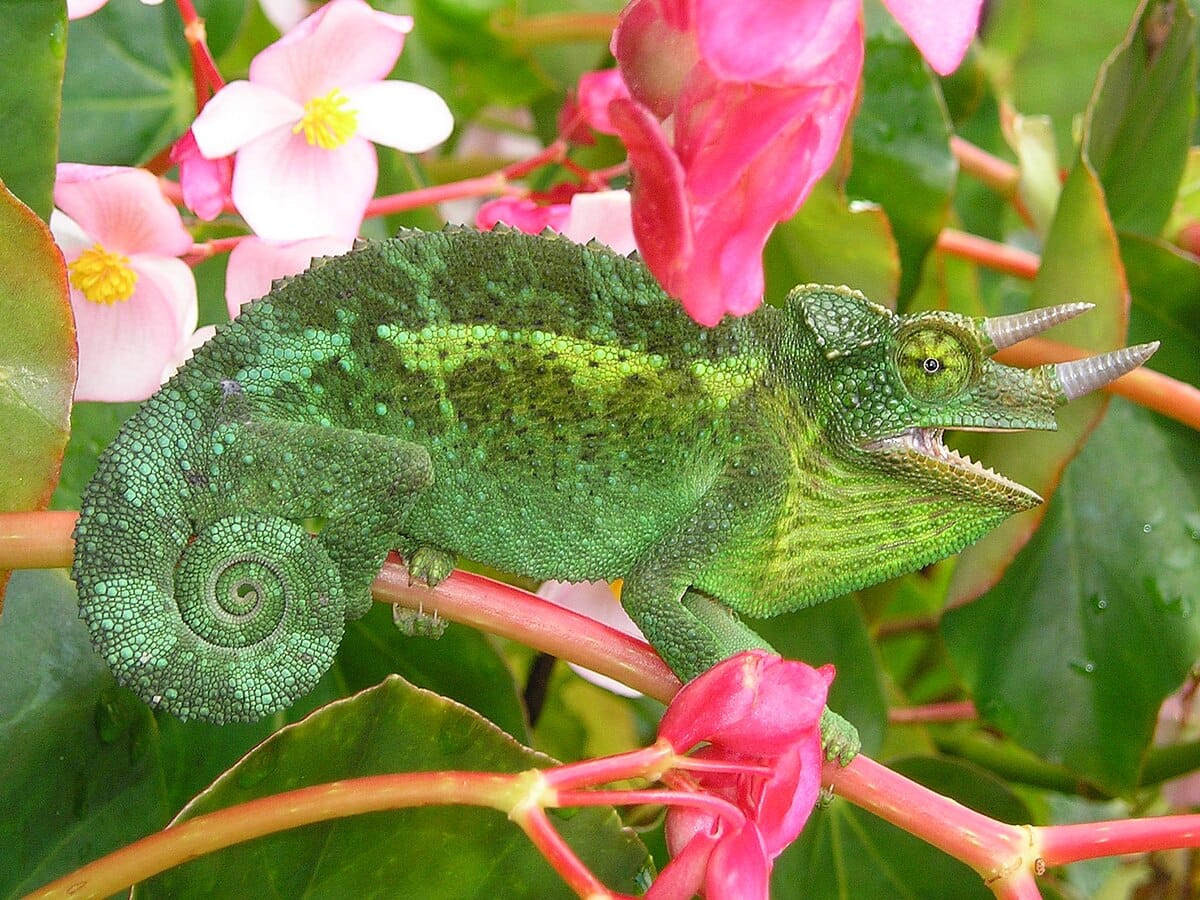
Famous for its three horn-like projections, the Jackson’s Chameleon looks like a miniature triceratops. Native to East Africa’s highlands, this species is often found in Kenya and Tanzania, living in cooler, misty forests.
Appearance and Identification
Males sport three prominent horns — one on the nose and two above the eyes — used in combat and mating displays. Their skin varies from bright green to turquoise, with subtle yellow accents. Females are smaller and may lack horns entirely.
Behavior and Diet
Jackson’s Chameleons are slow-moving but highly efficient hunters, using their independently moving eyes to scan for prey before launching their sticky tongue with lightning speed. They feed mainly on flies, grasshoppers, and small invertebrates.
Habitat and Distribution
They inhabit humid montane forests in Kenya and Tanzania, though some populations have been introduced to Hawaii, where they now thrive.
Fun Fact
Unlike most reptiles that lay eggs, female Jackson’s Chameleons give birth to live young — a rare trait among lizards.
40. Croaking Lizard (Anolis garmani)
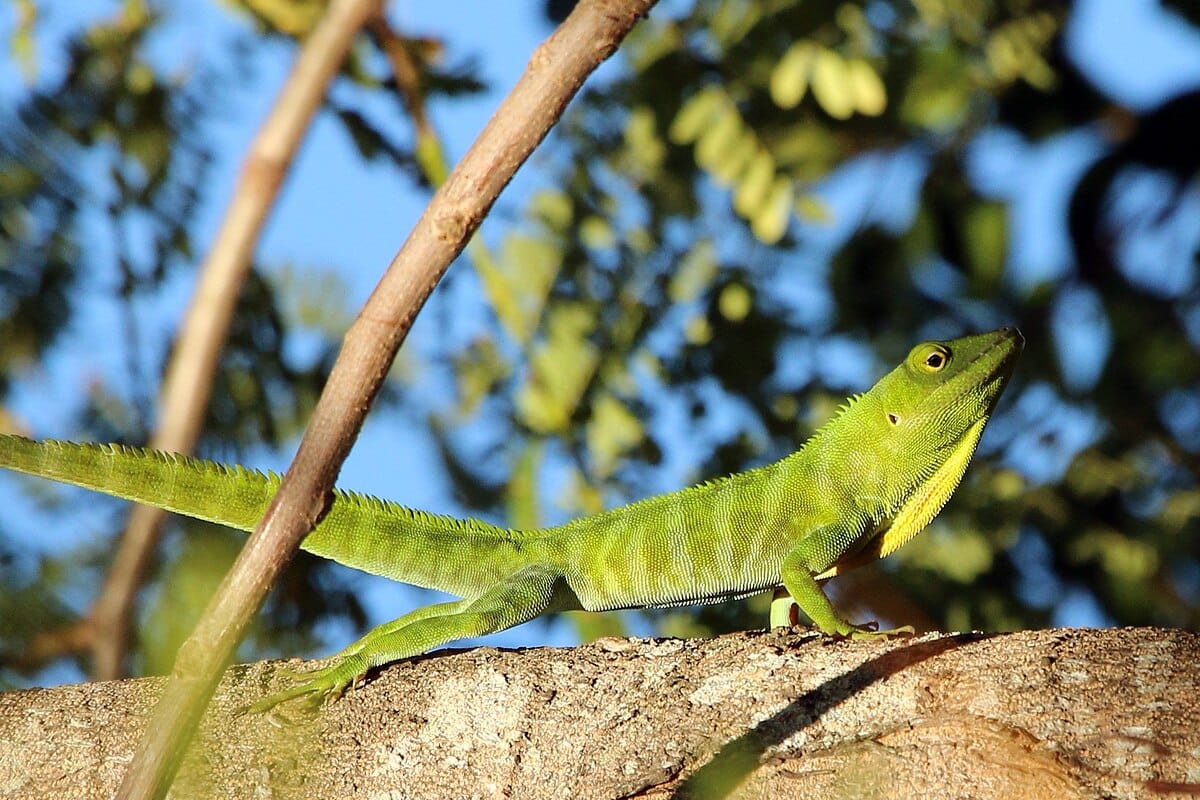
The Croaking Lizard, also known as the Jamaican Giant Anole, is one of the largest members of the anole family. It gets its name from the loud, frog-like croak it produces — a sound used to defend its territory and attract mates.
Appearance and Identification
This species grows up to 13 inches long, with a sleek green body that can shift in tone depending on mood or temperature. Males feature a large, orange-yellow throat fan (dewlap) that they extend during displays. Their large heads and muscular jaws make them look fierce, though they are mostly docile.
Behavior and Diet
Croaking Lizards are arboreal and diurnal, spending their days hunting insects, spiders, and smaller lizards. Males are territorial and will engage in head-bobbing and dewlap displays to ward off rivals.
Habitat and Distribution
Native to Jamaica, they inhabit forests, gardens, and urban areas where trees are abundant. They have also been introduced to Florida, where they are considered an invasive species.
Fun Fact
Their croak is so distinctive that locals can identify them by sound alone — earning them a legendary status among Jamaica’s wildlife.
Frequently Asked Questions About Lizards
1. What is the most common lizard?
The most common lizard in the world is the common house gecko (Hemidactylus frenatus). You’ll often find it clinging to walls near lights at night, feeding on moths and mosquitoes. This small, grayish lizard has adapted perfectly to living alongside humans and is found in warm climates across Asia, Africa, and the Americas.
2. How many types of lizards are there?
There are over 7,000 known species of lizards worldwide, divided into more than 25 families. They range from tiny chameleons no longer than your finger to massive monitor lizards like the Komodo dragon. Scientists continue to discover new species every year, especially in tropical rainforests and remote desert regions.
3. What lizard has 3 genders?
The whiptail lizard of the American Southwest is famous for its unusual reproductive biology. Some species of whiptails have both males and females, while others consist only of females that reproduce through a process called parthenogenesis—meaning they can produce offspring without mating. Technically, the “three genders” idea refers to populations that show mixed reproductive traits, but it’s more accurate to say they have unique forms of reproduction rather than literal three genders.
4. What is the most common house lizard?
The common house gecko wins again here. This small reptile thrives in human dwellings, where it hunts insects attracted to lights. They’re harmless, quiet, and even helpful since they keep pest populations under control. You might hear their soft “tchick-tchick” calls at night as they communicate with one another.
5. What is the most harmless lizard?
Most lizards are harmless, but the anole and gecko families are especially gentle. These lizards rarely bite, have no venom, and pose zero threat to humans or pets. Even if handled, they usually try to run rather than defend themselves. They’re ideal examples of peaceful reptiles in nature.
6. Is a newt a lizard?
No, a newt is not a lizard. Although they look similar, newts are actually amphibians—relatives of frogs and salamanders—while lizards are reptiles. The main difference is that newts need water for part of their life cycle, whereas lizards live their entire lives on land.
7. What is the king of all lizards?
The undisputed “king” of lizards is the Komodo dragon (Varanus komodoensis). Native to Indonesia, it’s the world’s largest lizard, reaching lengths of over 10 feet and weighing up to 150 pounds. With sharp teeth, venomous saliva, and powerful muscles, it’s a top predator capable of taking down deer and even water buffalo.
8. How to get rid of house lizards?
If you want to discourage house lizards humanely, start by removing their food source—insects. Keep your home clean, seal cracks, and use natural repellents like garlic, onion, or coffee powder. Lizards dislike the smell of these substances. Installing window screens and turning off outdoor lights at night also helps reduce their presence.
9. What’s the most common pet lizard?
The bearded dragon is one of the most popular pet lizards. Native to Australia, these friendly reptiles are calm, easy to handle, and show curious behavior that makes them great companions. Other common pet species include leopard geckos and blue-tongued skinks, all known for their docile nature.
10. Do geckos crawl on you at night?
It’s very unlikely. Geckos prefer staying near ceilings and walls where they can catch insects safely. They’re shy creatures that avoid contact with humans. While it’s possible one might accidentally crawl over you, it’s rare and harmless. Geckos don’t bite or attack—they just want to stay out of trouble and eat bugs.
11. What is the most affectionate lizard?
The bearded dragon is often considered the most affectionate lizard. While reptiles don’t feel emotions the same way mammals do, beardies show comfort and trust by resting calmly on their owners, closing their eyes, or even leaning in for warmth. Their gentle personality makes them ideal for beginner reptile keepers who want a friendly pet.
12. What happens if a gecko bites you?
A gecko bite is usually harmless. Most geckos have tiny teeth and weak jaws, so a bite might only feel like a light pinch. They don’t carry venom, and their bite doesn’t break the skin in most cases. If bitten, simply wash the area with soap and water. Geckos only bite when scared, so staying calm and gentle prevents it.
13. Which lizard is the most aggressive?
The monitor lizards, especially the Komodo dragon and water monitor, are among the most aggressive. In captivity, even smaller monitors can become defensive if they feel threatened. They use their tails and claws for defense and have powerful bites. However, in the wild, they prefer to avoid humans and only show aggression when cornered.
14. Do lizards recognize their owners?
Yes, some species—especially bearded dragons and leopard geckos—can learn to recognize their owners. They may respond to familiar voices, movements, or feeding routines. This isn’t emotional recognition like in dogs, but rather a sign of familiarity and comfort developed through consistent handling and care.
15. What is the most fun lizard to own?
The leopard gecko is often described as the most fun and interactive pet lizard. They have quirky personalities, enjoy exploring, and are easy to handle. Bearded dragons come close second for their expressive behavior and ability to interact calmly with people. Both species make engaging pets that offer plenty of entertainment without being high-maintenance.
16. What is the most toxic lizard?
The title of the most toxic lizard goes to the Gila monster (Heloderma suspectum) and its close cousin, the Mexican beaded lizard. These are the only two truly venomous lizards known. Their venom is delivered through grooves in their teeth, but they rarely pose danger to humans because they are slow-moving and non-aggressive.
17. Which lizard is friendly?
Bearded dragons, leopard geckos, and blue-tongued skinks are known for their friendly behavior. They tolerate handling well and often enjoy basking on their owners’ hands or shoulders. Their calm nature and predictable habits make them favorites among reptile enthusiasts and families alike.
18. Do lizards carry diseases?
While most lizards are safe to be around, some can carry Salmonella bacteria on their skin. This isn’t harmful to the lizard but can cause stomach upset in humans if proper hygiene isn’t followed. Always wash your hands after handling reptiles or cleaning their enclosures to stay safe and healthy.
19. What is the easiest lizard to keep alive?
The leopard gecko is one of the easiest lizards to care for. They don’t need UVB lighting, eat readily available insects, and are very hardy. With basic warmth, clean habitat, and regular feeding, they thrive for many years. This makes them perfect for beginners or kids learning about reptile care.
20. Do geckos eat mosquitoes?
Yes! Geckos are natural pest controllers. They actively hunt mosquitoes, flies, and other small insects around your home. This is one reason many people in tropical regions consider them beneficial guests. Having a few geckos around actually helps reduce annoying nighttime mosquito bites.
21. How to remove lizards from home?
To remove lizards from your home humanely, start by reducing their food source—insects. Keep your home clean, close windows at night, and seal cracks or gaps around doors. You can also use natural repellents like egg shells, garlic, or coffee powder. Lizards dislike strong smells and will leave on their own. Avoid using harmful chemicals; gentle deterrence works best.
22. What should I do if bitten by a lizard?
Most lizard bites are not dangerous. If you’re bitten, stay calm—wash the wound thoroughly with soap and water, apply antiseptic, and keep an eye on it for any redness or swelling. Only the rare venomous lizards, like the Gila monster, can cause more serious symptoms, but they live mainly in desert regions of the southwestern U.S. and Mexico. Seek medical attention if pain or swelling increases.
23. Are small lizards poisonous?
No, small lizards are not poisonous. Species commonly found around homes—like geckos or skinks—are completely harmless. They don’t have venom, and they don’t bite unless threatened. In fact, they help by eating mosquitoes, ants, and other small insects. So there’s no need to fear them.
24. Are lizards scared of humans?
Yes, most lizards are naturally afraid of humans. Their first instinct when approached is to hide or run away. This behavior helps them survive in the wild, where larger animals might see them as prey. Even house geckos will quickly dart behind furniture or walls when you come near—they’re shy, not aggressive.
25. What is the most aggressive pet lizard?
The Tokay gecko is known for its bold and sometimes aggressive nature. Unlike the smaller house geckos, Tokays can be territorial and will bite if handled roughly. However, with patient training and gentle care, even Tokay geckos can become calmer over time. For beginners, it’s better to start with docile species like leopard geckos or bearded dragons.
26. What is the prettiest lizard?
Beauty is subjective, but many agree that the Panther chameleon and the Blue Tree Monitor are among the most stunning. Panther chameleons display an incredible range of bright colors—reds, blues, greens, and oranges—that change depending on mood or temperature. The Blue Tree Monitor, with its metallic blue scales, looks almost unreal in person.
27. What is the easiest reptile to take care of for a kid?
The leopard gecko is often recommended as the best starter reptile for kids. They’re gentle, small, and easy to feed. Their simple care requirements—just a warm, dry enclosure and insects—make them perfect for young reptile enthusiasts learning responsibility. Plus, they don’t mind being handled when treated gently.
28. What is the kindest lizard?
The bearded dragon earns the title of “kindest lizard.” They are calm, tolerant of handling, and even seem to enjoy human company. Bearded dragons can learn to sit quietly on your shoulder or lap and observe their surroundings. Their mellow personality makes them one of the most beloved reptiles worldwide.
29. What lizard only has females?
Some species of whiptail lizards reproduce entirely without males. These “parthenogenetic” lizards create clones of themselves from unfertilized eggs. Found mainly in the deserts of the southwestern United States and Mexico, these all-female species have evolved to reproduce successfully in tough, isolated environments where mates are scarce.
30. What is the most feared lizard?
The Komodo dragon is the most feared lizard on Earth. As the largest living lizard, it can take down prey much larger than itself. With a powerful bite, sharp claws, and venom that causes shock and blood loss, it’s both fascinating and formidable. Despite their fearsome reputation, Komodo dragons rarely pose a threat to humans unless provoked.
31. What kind of lizard spits venom?
No true lizard actually spits venom. Some confusion comes from movies or myths, but in real life, venomous lizards like the Gila monster and Mexican beaded lizard deliver venom through their bite, not by spitting. However, certain snakes—like cobras—do spit venom as a defense mechanism, which may be where the mix-up comes from.
32. Are black lizards poisonous?
Most black-colored lizards are completely harmless. Color alone doesn’t indicate danger in reptiles. For example, the black skink or black anole may look intimidating, but they don’t carry venom or pose any threat. The only venomous lizards known are the Gila monster and the Mexican beaded lizard, neither of which are solid black.
33. What is the biggest lizard you can keep as a pet?
The Savannah monitor is one of the largest lizards that can be responsibly kept as a pet. They can grow up to 4 feet long and require large enclosures, strong heating, and experienced care. While bigger monitors like the water monitor can be tamed, they are best left to professional keepers due to their size and strength.
34. What lizard can squirt blood?
The Texas horned lizard (Phrynosoma cornutum) has one of the strangest defense mechanisms in the animal world—it can squirt blood from its eyes! This red spray can reach several feet and confuses or deters predators. While it looks dramatic, the blood isn’t toxic; it’s just a last-ditch way to avoid becoming a meal.
35. Are lizards poisonous to dogs?
Most lizards are not poisonous to dogs. If your dog catches or eats a small gecko or skink, it usually won’t cause harm—though it might upset their stomach. However, dogs should avoid eating large or exotic species, which could carry parasites or bacteria like Salmonella. Always supervise your pets and contact a vet if you notice vomiting or unusual behavior afterward.
36. Are green lizards poisonous?
No, green lizards such as the green anole or Carolina anole are entirely harmless. Their bright color helps them blend into leafy surroundings. They don’t have venom and rarely bite humans. In fact, they’re beneficial in gardens since they help control insect populations.
37. What is the only lizard that can walk on water?
The green basilisk lizard (Basiliscus plumifrons)—nicknamed the “Jesus Christ lizard”—is famous for running across the surface of water. It does this by sprinting on its hind legs at high speed, slapping the water with its feet to create lift. This trick helps it escape predators quickly, especially in its rainforest habitat of Central America.
38. What lizard can lick its eyes?
The gecko is one of the few lizards that can lick its own eyes. Unlike most reptiles, geckos don’t have eyelids, so they keep their eyes clean and moist by licking them. It might look funny, but it’s perfectly normal and helps them see clearly while hunting insects at night.
39. Do lizards have purple blood?
Some lizards from New Guinea, known as green-blooded skinks, actually have blood that appears green—not purple—due to high levels of a pigment called biliverdin. This chemical would be toxic to most animals, but these skinks have adapted to survive it. Purple blood, however, is not found in any known lizard species.
40. Is it okay if my cat ate a lizard?
In most cases, if your cat eats a small lizard, it’s not dangerous. However, some lizards can carry parasites or bacteria like Salmonella, which might upset your cat’s stomach. Watch for vomiting, drooling, or lethargy. If symptoms appear, contact a vet right away. To prevent this, try keeping windows and doors closed or use screens to keep lizards outside where they belong.
41. Are blue lizards poisonous?
No, blue lizards are not poisonous. Many lizards appear blue due to light reflection on special skin cells called iridophores, not because of toxins. For example, the Blue Tree Monitor and Blue-tailed skink are completely harmless. Their striking blue colors serve as camouflage or a way to distract predators—not as a sign of venom.
42. What if my dog ate a cockroach?
If your dog ate a cockroach, it’s usually not a major problem, but it’s a good idea to keep an eye on them. Cockroaches can carry bacteria or pesticides if they’ve been near treated areas. If your dog vomits or acts sick afterward, call your vet. Regular pest control and keeping your home clean can help avoid future encounters.
43. Is lizard pee toxic?
No, lizard urine is not toxic. Lizards excrete uric acid instead of liquid urine, which appears as a white or chalky substance. While it’s not dangerous, it can carry mild bacteria like any animal waste, so it’s best to clean it up promptly and wash your hands afterward.
44. Are orange skinks poisonous?
Not at all. Orange skinks get their color from natural pigmentation, not from toxins. They’re peaceful, insect-eating reptiles that pose no threat to humans or pets. In fact, their bright colors often appear during breeding season as a sign of health and vitality, especially in males.
45. Are blue scorpions poisonous?
Technically, yes—all scorpions are venomous to some degree, since they use venom to subdue prey. However, most species, including those that appear blue under UV light, are not dangerous to humans. Their stings may hurt like a bee sting but are rarely serious. Only a few species in North Africa, the Middle East, and Latin America have venom strong enough to cause medical issues.
46. Is cat saliva poisonous to lizards?
Yes, cat saliva can be harmful to lizards. It contains bacteria that can cause severe infections in reptiles if they’re bitten or licked by a cat. Even a small scratch can turn deadly. If your pet lizard has any contact with a cat, it’s best to clean the wound immediately and see a reptile vet for treatment.
47. Is a gecko an animal?
Yes, a gecko is an animal—specifically, a type of reptile. Geckos belong to the order Squamata, which also includes snakes and other lizards. They are cold-blooded, egg-laying creatures that have adapted to a wide range of environments, from rainforests to deserts. Some species can even live comfortably inside human homes.
48. How to get rid of lizards?
To gently get rid of lizards, focus on keeping your surroundings clean and pest-free. Lizards enter homes mainly to hunt insects, so eliminating bugs naturally discourages them. Use garlic cloves, egg shells, or coffee powder in corners and window sills as natural repellents. Remember, lizards are harmless and help control mosquitoes, so if possible, let them live peacefully outdoors.
49. What is the most harmless lizard?
The common house gecko and the green anole are among the most harmless lizards. They don’t have venom, rarely bite, and are actually helpful because they eat insects. Their small size and shy nature make them perfectly safe to have around your home or garden.
50. Do geckos crawl on you at night?
It’s very unlikely for a gecko to crawl on you while you sleep. Geckos are shy nocturnal creatures that prefer staying near walls or ceilings where insects gather. They avoid humans unless startled or trapped. Even if one accidentally walks near you, it poses no harm—it’s simply trying to find its next meal.
Conclusion
Lizards are among the most diverse and fascinating creatures on Earth—each species perfectly adapted to its own environment, from scorching deserts and lush rainforests to rocky mountains and suburban gardens. Through this guide to 40 common types of lizards, we’ve explored their incredible variety in color, shape, and behavior, proving that these reptiles are far more than simple cold-blooded animals.
From the mighty Komodo Dragon ruling its island domain to the tiny Gecko climbing smooth walls with ease, lizards demonstrate resilience, intelligence, and evolutionary brilliance. They help balance ecosystems by controlling insect populations, dispersing seeds, and serving as prey for larger predators. Every lizard, no matter its size, plays an important role in the natural world.
Whether you’re a wildlife enthusiast, a budding herpetologist, or simply someone who appreciates nature’s wonders, understanding and respecting these reptiles is essential. Protecting their habitats ensures that future generations can continue to marvel at their diversity and beauty.
So the next time you spot a lizard basking in the sun, take a moment to observe—it’s a glimpse into millions of years of evolution, survival, and adaptation, right before your eyes.
Read more:
